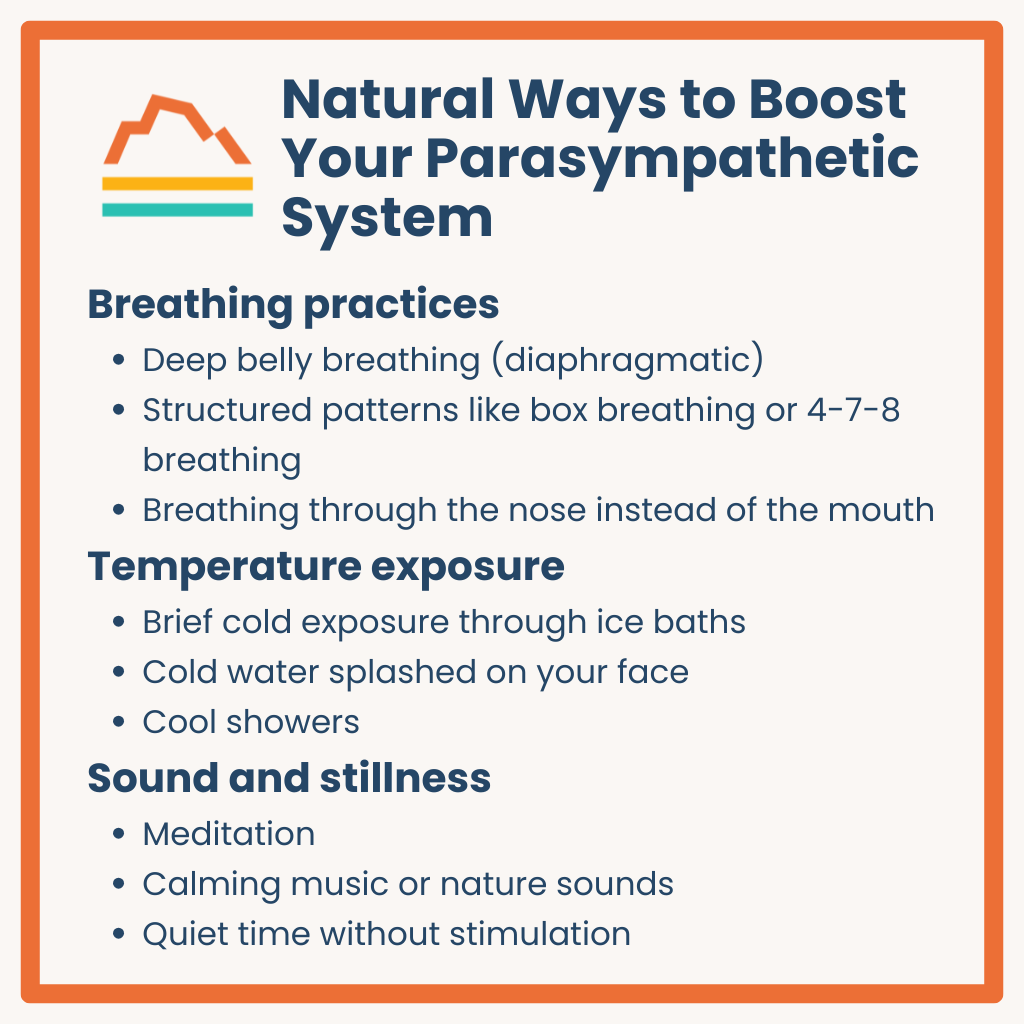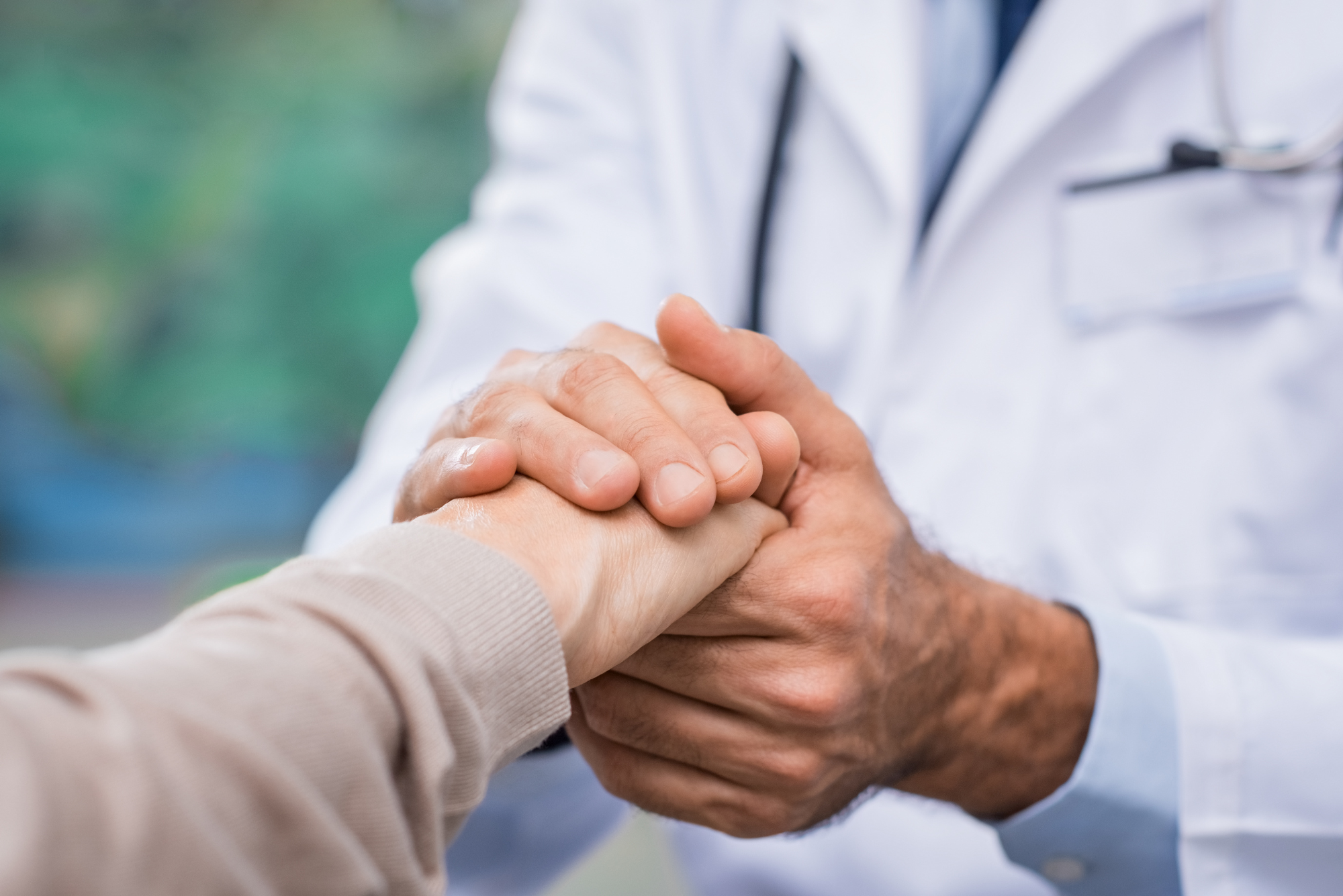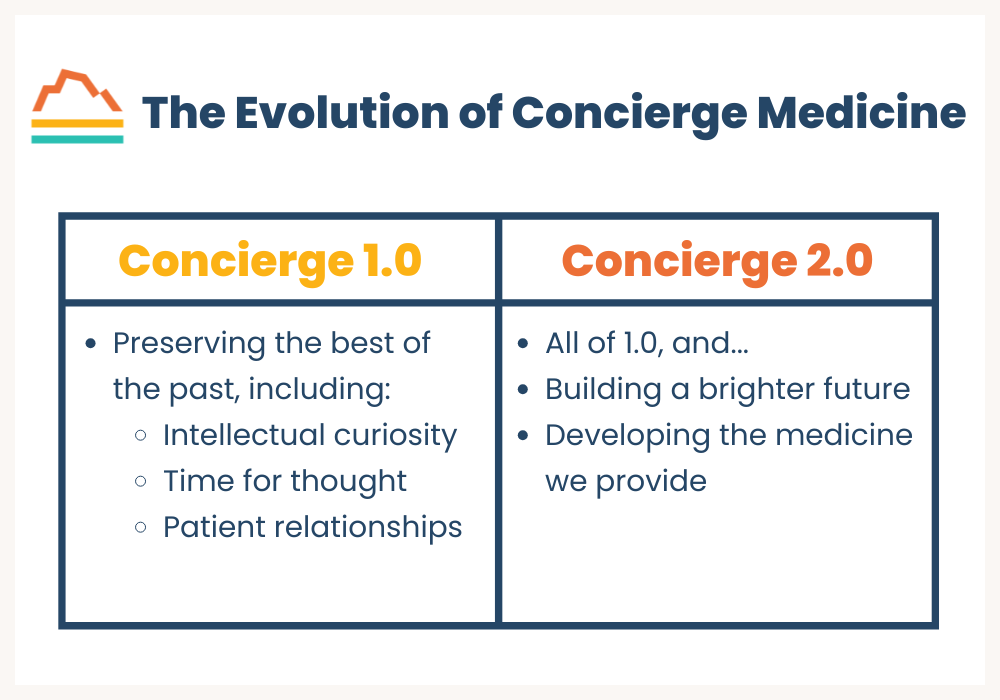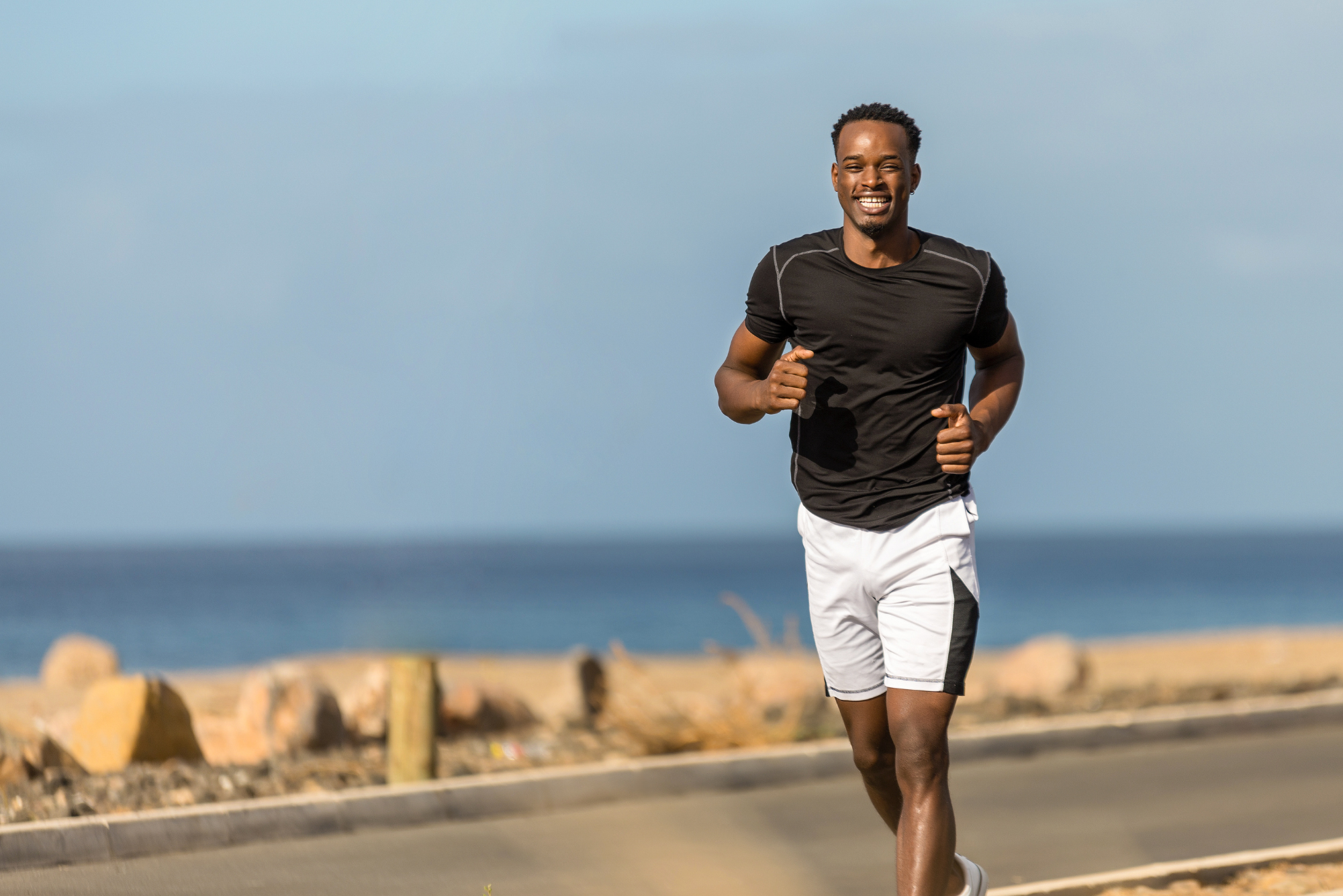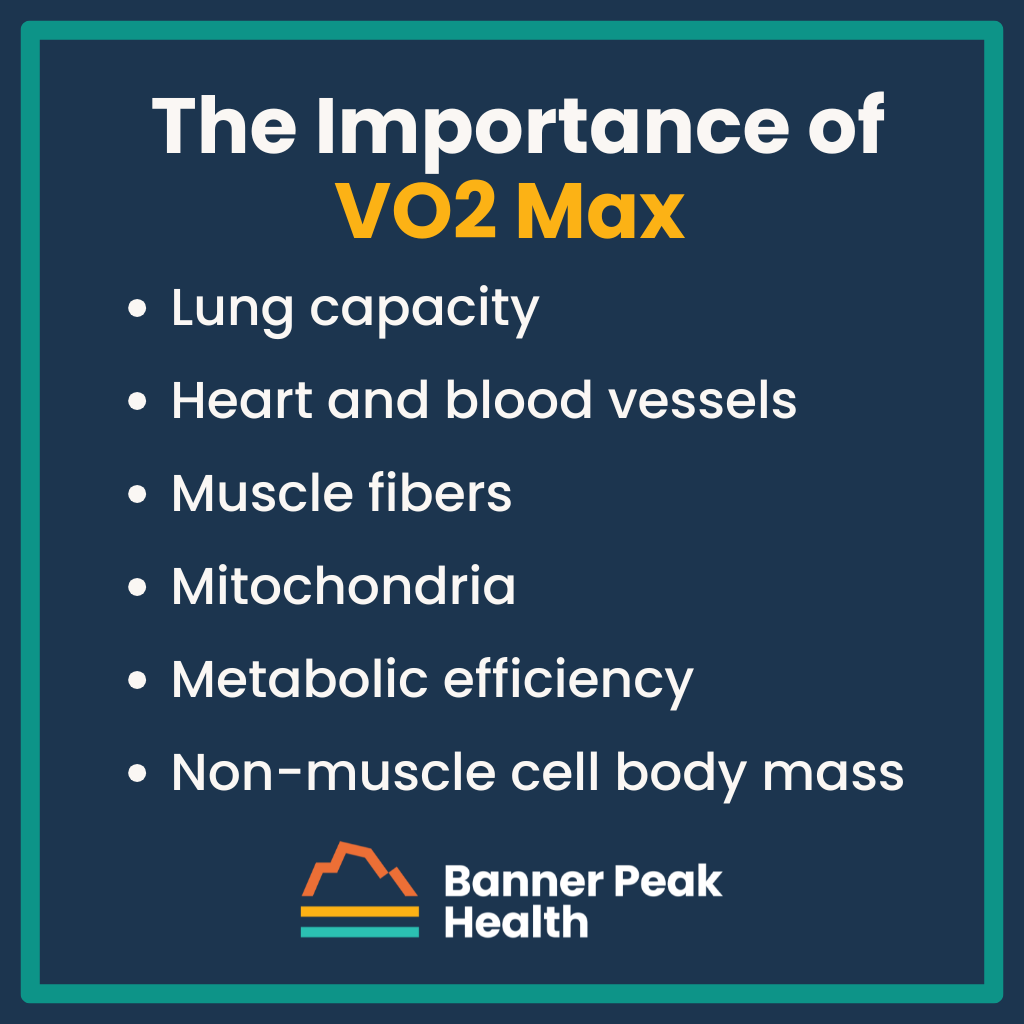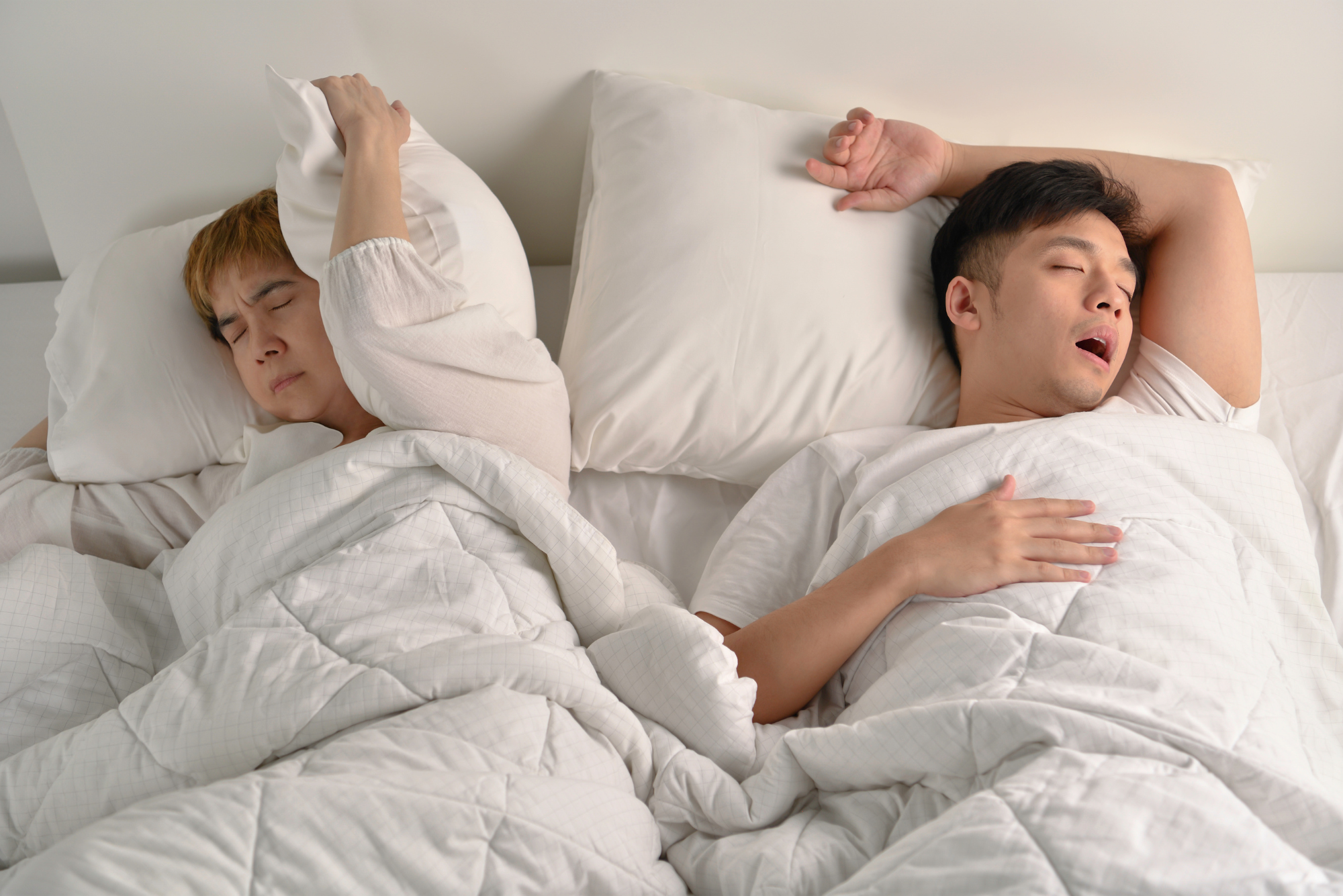Why the Traditional Medical Approach to Sleep Is Failing Us
How do we fall asleep? Do we actively go out and get sleep, or do we create a set of conditions where we allow sleep to come to us?
This may seem like a hypothetical or philosophical distinction, but it’s vital to understanding sleep management.
The advent of the sleeping pill has led to the misconception that sleep is something you can actively obtain, or “go get.” Unfortunately, that’s a false promise.
The Sleeping Pill: A Dangerous Path
The sleeping pill has led us down a detrimental path for two main reasons.
First, sleeping pills are dangerous. There’s robust evidence that sleeping pills are associated with an increased risk of falls, pneumonia, motor vehicle accidents, cognitive impairment, and premature death. At the societal level, they’ve created a very high burden of side effects.
Sleeping pills are also often taken for chronic daily use for years on end, which is off-label (meaning it’s neither how they were studied nor what the FDA approved them for). The sleeping pills’ safety and efficacy have only been demonstrated in trials of several months’ duration (more on this in a bit). Even then, the absolute magnitude of sleep provided was minimal at best.
Secondly, sleeping pill culture has created a false understanding of how we fall asleep. The healthiest and most efficient route to sleep focuses not on how to obtain sleep but on how to identify and maximize the multiple necessary prerequisites to create the conditions for healthy sleep.
The sleeping pill masquerades as a single, simple solution to an undoubtedly multifactorial problem. This is far from the truth. Complicated problems require complicated solutions.
The Pharmaceutical Industry’s Sleep Scam
Just as Big Pharma pulled a fast one on the American people with the narcotic opioid epidemic, drug companies pulled a fast one with the way they got people to think about sleeping pills. It was a scam, and the story needs to be told.
The National Sleep Foundation was founded in 1990 as a nonprofit organization dedicated to educating providers and individuals about proper sleep. Donations funded it, including those from pharmaceutical companies.
In 1992, Sanofi released the first non-benzodiazepine sleeping medication, Ambien (also called zolpidem). By 2008, the National Sleep Foundation, with funding from Sanofi-Aventis (they had merged by then), created a “Sleep Smart Campaign” designed to educate people about insomnia and encourage them to seek medical care.
The campaign included data suggesting up to one-third of Americans were at risk for insomnia. They claimed to educate people about sleep hygiene, but encouraged them to “discuss an appropriate way to take a sleep aid with your healthcare provider.” This wasn’t education — it was an infomercial from a nonprofit.
The result? Prescription sleeping pill rates skyrocketed from 1999 to 2010. A large survey conducted in 2010 found that there had been 53.4 million prescriptions for zolpidem in the United States. We became a nation of chronic sleeping pill users, despite embarrassingly weak data supporting the efficacy and safety of long-term use of medications like zolpidem.
Ambien has never been studied for use beyond 12 months. Even then, there were only two studies — one with 33 patients and one with 89 patients.
Fortunately, the tide began to turn as the side effects of sleeping pills became more apparent. These included increased risk of falls and fractures, cognitive and motor impairment, suicidal ideation, pneumonia, and motor vehicle accidents.
A movement arose to curtail the widespread use of sleeping pills, particularly for those over 65, for whom the risk of side effects is much greater. The National Health and Nutrition Examination Survey revealed that in 2003, an estimated 4.7% of Americans were taking sleeping pills. By 2018, that number had reduced by approximately one-third to 3.4%.
Most importantly, there was a marked improvement in the use of sleeping pills among those over 80, who are at the greatest risk of adverse side effects.
Rethinking Healthcare’s Approach to Sleep
Unfortunately, turning to a simple prescription is all too common. Our current healthcare system doesn’t support a broader, deeper, multifactorial approach that would be more appropriate and help us sleep better.
I use the metaphor of a leaky roof and a raincoat. Doctors in traditional fee-for-service medicine don’t have the time or background to investigate why the roof is leaking (the underlying causes of insomnia). Instead, they quickly prescribe a sleeping pill — the raincoat.
A comprehensive approach to sleep requires careful consideration of the many possible causes of insomnia:
- Concomitant physical diseases like asthma, Parkinson’s disease, and congestive heart failure
- Mental health disorders such as PTSD, depression, anxiety, and bipolar disorder
- Prescription medications associated with insomnia, including steroids, long-acting beta-agonists, and diuretics
- Personal lifestyle substances like nicotine, alcohol, and caffeine
- Lifestyle issues including chronobiology related to light exposure
To merely prescribe a pill bypasses this wide range of potentially reversible or modifiable disorders that could improve sleep without resorting to potentially hazardous sleeping pills — pills that were never studied for safety for the duration they’re currently being used.
That’s what I seek to address as a concierge physician.
Rather than seeing you for a 10-minute appointment, hearing a quick rundown of your sleep habits, and writing a prescription, I may spend an hour speaking with you before I make a recommendation about improving your sleep.
And if I ever prescribe any medication, I’ll be available if you have questions or encounter unforeseen difficulties.
Demographic-Specific Sleep Considerations
Sleep recommendations differ for various age groups. Those over 65 are at markedly increased risk for side effects from sleeping pills, yet they also suffer more concomitant illnesses that put them at risk for sleep problems.
For athletes and high-performance individuals, maintaining appropriate sleep is even more important to optimize recovery. Quality sleep is essential for physical restoration and peak performance.
Graduating From Sleep Medication
As weak as the evidence is for sleeping pills in treating chronic insomnia, the literature is solid on the best alternative: cognitive behavioral therapy for insomnia (CBT-I).
There’s a shortage of providers who offer this service. The pandemic has created a huge access problem for healthcare, especially for therapists trained in cognitive behavioral therapy.
At Banner Peak Health, we connect our members to either in-person therapy, telehealth options, or textbook resources to use the safest and most efficacious form of insomnia treatment.
I highly recommend “Say Good Night to Insomnia” by Greg D. Jacobs. This book has helped many patients, including elderly individuals dependent on sleeping pills, successfully transition away from medication.
Exciting Developments in Sleep Research
The sleep medicine field is advancing rapidly with new technologies that allow us to monitor sleep quality outside traditional laboratory settings. At Banner Peak Health, we’re particularly interested in several innovations:
Wearable Sleep Tracking
The Oura Ring measures body temperature, movement, and heart rate to track sleep stages, sleep efficiency, and overall sleep quality.
Unlike bulky wristbands or watches, the Oura Ring is comfortable to wear during sleep and provides detailed metrics that help us understand sleep patterns over time.
Heart Rate Variability (HRV)
HRV measurement offers a window into the autonomic nervous system’s function during sleep.
Higher heart rate variability typically indicates better recovery and lower stress levels. By monitoring HRV during sleep, we can gain insights into how well your body is recovering and whether your sleep is restorative.
Sleep Imaging Systems
The SleepImage device enables a more detailed analysis of sleep architecture without requiring an overnight stay in a sleep lab. This device can help identify disruptions in sleep cycles and breathing patterns that might be missed with more basic monitoring methods.
By incorporating these technologies into our practice, we can make more precise recommendations for improving sleep quality. However, these tools are supplements to, not replacements for, addressing the causes of sleep problems.
Today’s Takeaways
- Think beyond the sleeping pill. When it comes to sleep, broaden your vantage point to see beyond “quick-fix” medication.
- Think like an internist. Create a “differential diagnosis” by listing the multiple factors you may need to address in order to improve your sleep.
- Remember the fundamentals of good sleep:
- Exercise
- Reduce stress
- Be cautious of your caffeine intake
- Create an environment conducive to sleep
Finally, make sure your physician’s sleep medicine philosophy aligns with your own. Otherwise, you probably won’t see the health results you want.
What Toxins Are Released After Massage? Separating Fact From Fiction
There’s a paradox in health I’ve observed throughout my career: Most healthy behaviors don’t deliver the best sensory experience.
Running, weightlifting, flossing, and avoiding ice cream are all beneficial activities, but for most people, they don’t feel particularly pleasant in the moment. We do them because we know they’re good for us, not because they’re enjoyable.
Then there’s massage therapy — a delightful exception to this rule. Massage feels good and is good for you. This unique combination makes it worth exploring in greater depth, including reviewing what toxins are released after massage.
How Massage Benefits Your Body: A System-by-System Breakdown
Let’s look at how massage therapy positively affects different bodily systems:
Musculoskeletal System
Massage reduces muscle tension and pain while improving range of motion. It can break down adhesions and stiffness that develop in muscles and connective tissue, especially after intense physical activity or prolonged periods of inactivity.
Nervous System
Massage promotes deep relaxation by activating the parasympathetic nervous system (your “rest and digest” mode). It can reduce muscular compression around peripheral nerves and stimulate the release of endorphins — your body’s natural painkillers.
Circulatory System
Massage improves blood circulation, helping to deliver oxygen and nutrients more efficiently through the body.
Endocrine System
Massage increases levels of hormones such as dopamine and serotonin, which are associated with improved mood. It simultaneously reduces cortisol, the primary stress hormone we want less of.
These hormonal changes can lower heart rate and blood pressure, improve digestion, create deep relaxation, and reduce muscle soreness and fatigue.
Lymphatic System
Many people are unaware that our circulatory system actually has three sets of “plumbing,” not just two:
- The arterial system, which brings oxygen and nutrients to cells, propelled by the heart.
- The venous system, which returns blood to the heart after delivering oxygen and carries away carbon dioxide.
- The lymphatic system, which is often overlooked but equally important.
The lymphatic system collects interstitial fluid — the fluid that bathes your individual cells. This fluid fills the spaces between cells, delivering nutrients and collecting waste products. After bathing the cells, the lymphatic system collects this fluid and eventually returns it to the venous system in the upper torso.
Unlike blood, the heart doesn’t pump lymphatic fluid. Instead, it moves through the action of your muscles, which pump the fluid along lymphatic channels. This is where massage becomes particularly relevant: it’s an extremely effective way of enhancing lymphatic circulation.

Source: National Cancer Institute. Components of the Lymphatic System. SEER Training Modules.
Does Massage Release Toxins? The Answer Is Complicated
Does getting a massage release toxins? This question is complicated, as the term “toxin” is used loosely in health conversations.
What We Mean by “Toxins”
If you define “toxins” as foreign substances, poisons, contaminants, pesticides, drugs, or food supplements, then no, massage doesn’t significantly impact these types of toxins. These substances have their own clearance pathways:
- From blood to kidneys, then excreted in urine
- From blood to liver to gut, then excreted in bowel movements
Massage doesn’t meaningfully influence these processes for removing external toxins from your body.
Metabolic Waste: The “Toxins” Massage Does Help Remove
However, if you define “toxins” as the natural byproducts from cellular metabolism within your body, then yes — massage helps clear these substances. These include:
- Lactic acid (a byproduct of anaerobic metabolism during exercise)
- Cellular debris from damaged or dying cells
- Excess proteins and protein fragments generated during cellular activity
- Carbon dioxide and other metabolic byproducts
Your cells create these substances. They’re bathed in interstitial fluid, and the lymphatic system transports them out. By stimulating lymphatic flow, massage serves as a “car wash” for your cells, removing these waste products more efficiently.
Do Massages Release Toxins? The Bottom Line
So, does getting a massage release toxins? The answer depends on what you mean by “toxins.”
If you’re concerned about external contaminants and poisons, massage isn’t the solution. Your liver and kidneys handle those without much help from massage therapy.
But if you’re referring to the natural waste products that accumulate in tissues from normal cellular function, then yes, massage enhances the removal of these substances by activating the lymphatic system.
This distinction matters because it helps us understand the real benefits of massage without exaggerated claims. Massage therapy offers numerous evidence-based advantages for physical and mental health, regardless of how we label the substances it helps remove from your tissues.
At Banner Peak Health, we believe in providing accurate information about wellness practices like massage therapy. Understanding the science behind these practices helps you make informed decisions about incorporating them into your health regimen.
The next time you enjoy a massage, you can appreciate not just how good it feels but also how it supports your lymphatic system and clears cellular waste from your tissues — a rare example of a health practice that’s as pleasurable as it is beneficial.
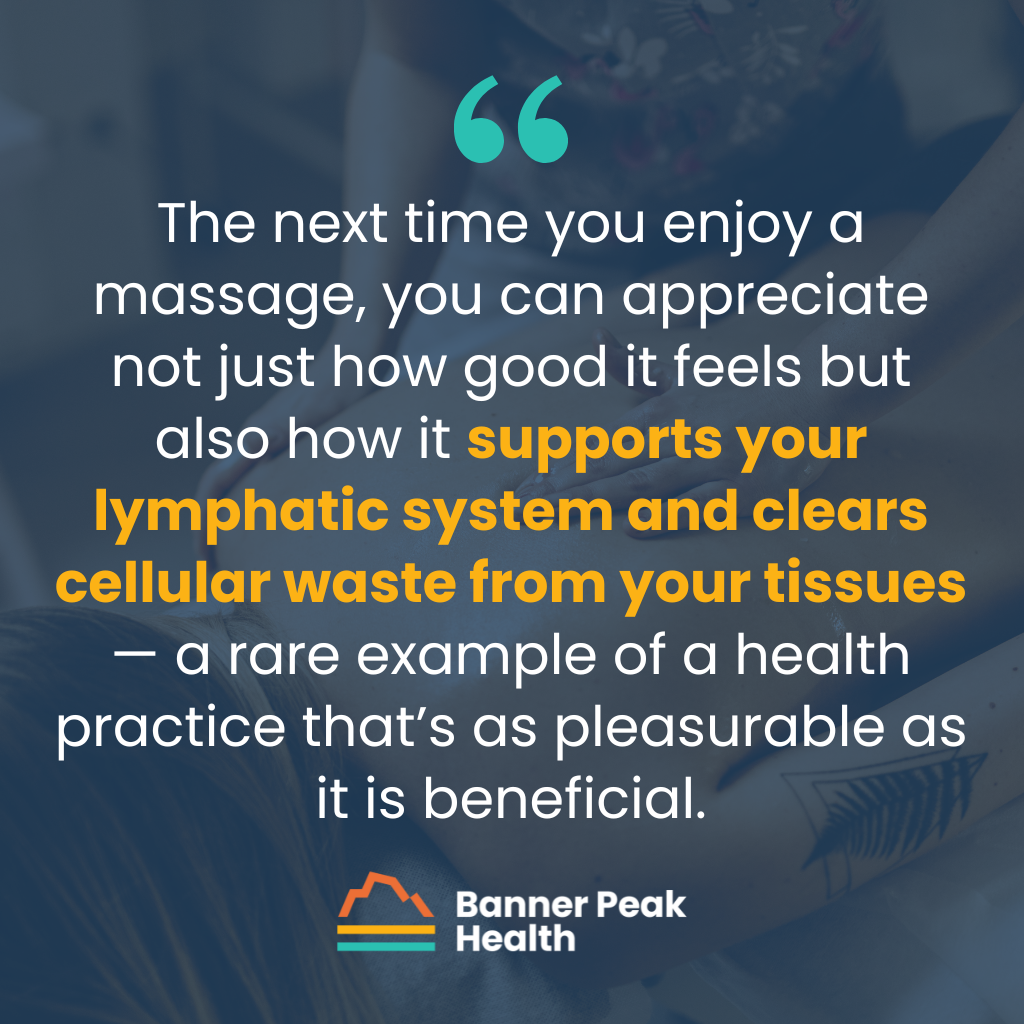
The Power of the Multi-Physician Model in Concierge Medicine
I’m a fair-weather basketball fan. I only follow the Golden State Warriors if they make the playoffs.
Their coach, Steve Kerr, coined the term “strength in numbers” to embody the team’s philosophy — and with four NBA championships in the last 10 years, he was onto something there.
The same concept applies to medical practices. I practiced solo concierge internal medicine for 16 years (2007–2023) and have been part of a multi-physician group for the last two years. Based on my experience, the private practice vs. group practice models are very different in many areas.
Common Concerns About Private Practice vs. Group Practice
Many patients worry that moving from private practice to group practice means less personal care. This fear often stems from past experiences with large medical groups in the traditional care model, where insurance was king and overworked physicians couldn’t give each patient the attention they deserved.
But concierge group practices operate differently — they maintain close doctor-patient relationships while adding the advantages of a coordinated team.
When comparing types of medicine practices, physicians in group settings spend less time managing business operations and more time building meaningful connections with patients than they can working solo.
The Evolution of Care Models
Concierge medicine began with solo physicians breaking away from large, insurance-controlled medical groups. This first wave worked well — individual doctors unbeholden to insurance could give patients the attention and options they needed to achieve optimal health.
But medicine grows more complex each year. As concierge medicine 1.0 gives way to concierge medicine 2.0, modern concierge care needs more extensive resources and specialized skills.
Most concierge practices still follow the private practice model, yet the demands of advanced medicine point toward group benefits:
Shared Medical Knowledge
When multiple doctors work together, they share insights about new treatments and challenging cases. Senior physicians mentor younger ones, and each doctor brings unique training and skills to the practice. Combined expertise leads to better medical care.
Continuous Coverage
In a group practice, you’ll always have access to a doctor who knows your medical history. When your primary physician takes time off, another team member who’s familiar with you can step in seamlessly.
Better Resources Through Scale
Private practice vs. group practice differences show up clearly in available resources.
A group can support dedicated staff members like phlebotomists for blood draws and care coordinators who manage referrals and insurance issues. We maintain specialized staff training programs and can invest in new medical technologies more efficiently.
Team Spirit and Professional Growth
Group practices create an uplifting environment that maintains professional enthusiasm. Working together energizes staff and physicians alike. This positive atmosphere flows directly to patient care quality.
Our philosophy is simple: happy staff and physicians lead to happy patients, which creates better health outcomes for everyone.
Long-Term Stability
Group practices offer stability beyond any single doctor’s career. When physicians retire, patients already know other doctors in the practice. This smooth transition preserves care quality and medical history knowledge.
Intelligent Labor Division
Running a private practice means wearing many hats — owner, manager, business administrator, and doctor. These responsibilities limit time for patient care. Group practices free physicians from these constraints through smart division of labor.
Private Practice vs. Group Practice: A Better Model for Everyone
My experience running a private practice vs. a group practice has proven to me that groups create a supportive, energizing environment. Doctors maintain their close patient relationships while enjoying the benefits of teamwork and shared resources.
The next time you consider different types of concierge practices, remember that group practice vs. private practice isn’t about size — it’s about service quality. A well-structured group concierge practice combines personal attention with coordinated care and extensive resources.
Looking at my practice now, I see the same “strength in numbers” philosophy that brought the Warriors their championships. When medical professionals work as a team, sharing knowledge and supporting each other, patients receive better care.
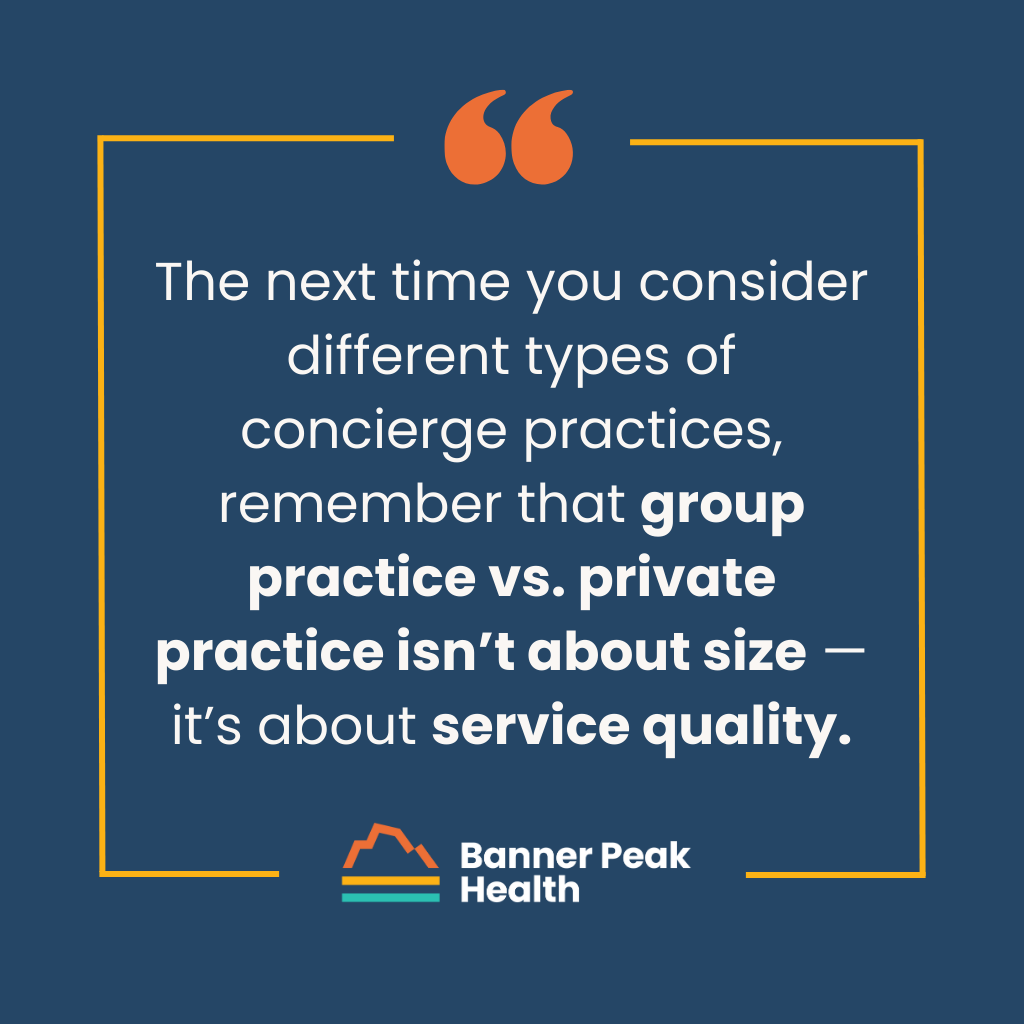
Light Therapy Lamps: A Doctor’s Guide to Boosting Mood and Energy
Winter brings shorter days and less sunlight, leading many people to notice changes in their mood and energy.
As a medical student in the late 1980s, I researched seasonal affective disorder (SAD) during my psychiatry rotation. I’ve followed the science of light therapy for nearly 40 years, watching it grow from an incipient treatment to a standard medical intervention offered through light therapy lamps.
How Light Therapy Lamps Work in Your Body
Our bodies run on internal clocks called our circadian rhythm. Almost every protein and bodily function follows precise timing, including our emotional state and energy levels.
When days grow shorter, with later sunrises and earlier sunsets, we get less morning light to start our day. Many people feel they never fully “wake up,” experiencing decreased mood and energy from living out of sync with their circadian rhythm.
SAD’s medical definition includes a seasonal pattern of fatigue, oversleeping, weight gain, decreased mood, and reduced interest in activities. The condition affects between 0.5% and 10% of people, depending on latitude — from 1% in Florida to 9% in Alaska. However, many more people experience milder symptoms during darker months without meeting the full diagnostic criteria.
Understanding Light and Your Body Clock
Scientists use the German word “zeitgeber” (meaning “time giver”) to describe the environmental cues that reset our internal clock. Light is the strongest zeitgeber, reaching us primarily through our eyes.
Our eyes process light through several pathways. The retina contains rods (for black and white vision in low light) and cones (for color vision in bright light). We also have specialized non-visual cells called intrinsically photosensitive retinal ganglion cells (ipRGCs). These cells contain melanopsin, a molecule sensitive to blue light at 480 nanometers, and they send signals directly to our brain’s master clock: the suprachiasmatic nucleus.
The Evolution of Light Therapy Lamps
Traditional light therapy lamps have proven effective at resetting our circadian rhythm, reducing SAD symptoms by 40%–60%. The standard approach involves sitting in front of a light therapy lamp that produces 10,000 lux of whitish-blue light first thing in the morning.
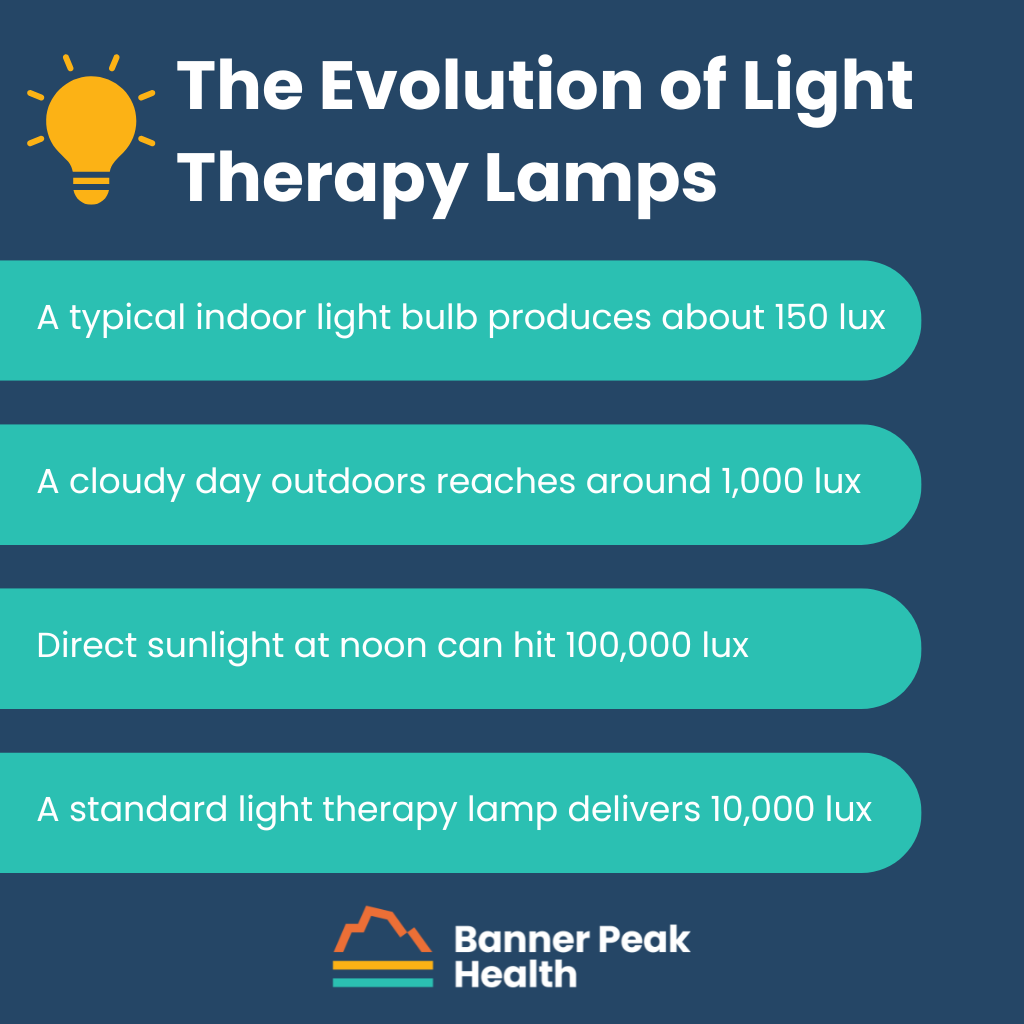
To put the brightness of a light therapy lamp into perspective:
- A typical indoor light bulb produces about 150 lux.
- A cloudy day outdoors reaches around 1,000 lux.
- Direct sunlight at noon can hit 100,000 lux.
- A standard light therapy lamp delivers 10,000 lux (it is a bright light!).
The Science of Sunrise and Sunset
Research from the University of Washington uncovered another way light affects our internal clock.
We have three types of cone cells:
- S cones detect blue light.
- M cones detect green light.
- L cones detect red light.
These researchers discovered that our cones respond to specific blue-yellow color contrasts occurring at sunrise and sunset. This second pathway helps regulate our internal clock independently of the melanopsin system. This makes sense from an evolutionary point of view. Our ancestors watched sunrises and sunsets, naturally synchronizing their circadian rhythms with their environment.
Beyond Traditional Light Therapy Lamps
This understanding led to the TUO light bulb.
Unlike traditional light therapy lamps that require dedicated morning sessions, this smart bulb cycles through sunrise and sunset colors at speeds too fast for conscious perception. While appearing as white light, it creates the exact color combinations that help synchronize our internal clock — and does so at just a few hundred lux instead of the intense 10,000 lux of standard light therapy lamps.
 Image Credit: The TUO Life
Image Credit: The TUO Life
The TUO system includes:
- Wi-Fi-enabled bulbs (about $50 each)
- Smartphone app for custom timing
- Three light modes:
- Wake mode for morning activation
- Calm mode with reduced blue light for evenings
- Neutral mode for midday
While randomized controlled trials haven’t yet confirmed the TUO bulb’s effectiveness for SAD (the technology is too new), the underlying science suggests it should work.
While traditional light therapy lamps remain effective for SAD treatment, new technologies offer different approaches. Standard light therapy lamps deliver intense light in focused sessions, while newer smart bulbs like TUO provide gentler, timed light exposure throughout the day.
Beyond SAD: Social Jet Lag
SAD affects a small portion of people during specific seasons. But “social jet lag” impacts most of us year-round.
Before the advent of artificial lighting, humans woke with the sun and slept after sunset. This pattern matched our evolved biology. Today, few city dwellers follow these natural rhythms.
Living out of sync with our internal clock impairs both our emotional and physical health. New lighting technology lets us create artificial sunrises and sunsets indoors, helping restore natural patterns even in modern life.
Setting Up Your Light Therapy System
I use these new light therapy bulbs in my own home. Most people have a “delayed phase” sleep pattern — their internal clock runs longer than 24 hours, making morning wake-up difficult. These people benefit most from morning exposure to a light therapy lamp or smart bulb system.
For optimal results with TUO bulbs, place them where you spend time in the morning:
- Bedroom
- Bathroom
- Kitchen
The latest smart bulbs can automatically adjust throughout the day, providing energizing light in the morning and reducing blue light before bed. They’re more convenient than traditional light boxes while working with our body’s natural light-sensing mechanisms.
Talk with your doctor about whether light therapy makes sense for your situation. With proper timing and implementation, it can restore your body’s natural rhythm and improve your mood and energy not only during the darker months but throughout the year.
How to Optimize Your Autonomic Nervous System’s Stress-Fighting Function
I’ve written extensively about stress and its health effects. I’ve focused mostly on reducing stress exposure, but equally valuable is strengthening our body’s intrinsic stress-fighting ability.
This happens through the parasympathetic branch of our autonomic nervous system.
The Balance Within
Our autonomic nervous system (ANS) controls unconscious functions like digestion, breathing, heart rate, and immune response. Two ANS branches work together to maintain balance: the sympathetic (“fight or flight”) and parasympathetic (“rest and digest”) systems.
Most people recognize the signs of high sympathetic activity: dry mouth, rapid breathing, racing heart, stomach tightness, and that bottled-up feeling of anxious energy. This response is helpful when we need to outrun a grizzly bear. The problem? In modern times, we don’t run from bears. Instead, we face constant small stressors that keep our sympathetic system firing day after day.
The long-term effects of chronic sympathetic activation include fatigue, weakened immunity, high blood glucose, obesity, and high blood pressure. An activated parasympathetic system, meanwhile, creates a state of calm focus. People with good parasympathetic tone sleep well, maintain steady energy, digest food properly, and stay mentally sharp. They recover quickly from stress and maintain healthy reproductive function.
Natural Ways to Boost Your Parasympathetic System
Avoiding stress is good for our health. However, enhancing the parasympathetic nervous system is a more subtle but potentially more powerful and longer-acting way to achieve optimal wellness.
There’s a concept of parasympathetic rehabilitation: endogenously tapping into our body’s innate ability to generate more parasympathetic tone. I’ve written extensively about these techniques that have stood the test of time:
Breathing practices
- Deep belly breathing (diaphragmatic)
- Structured patterns like box breathing or 4-7-8 breathing
- Breathing through the nose instead of the mouth
Temperature exposure
- Brief cold exposure through ice baths
- Cold water splashed on your face
- Cool showers
Sound and stillness
- Meditation
- Calming music or nature sounds
- Quiet time without stimulation
The Vagus Nerve: Your Body’s Stress Fighter
The vagus nerve plays a key role in parasympathetic function.
Vagus is Latin for “wander,” and true to its name, the vagus nerve starts at your brain stem and wanders throughout your body like a complex network. It allows you to speak and swallow, controls your heart rate and breathing, and influences your digestion through connections to your stomach, pancreas, and intestines. It even connects to your kidneys and adrenal glands.
Your sympathetic nerve fibers follow a different path, branching out from your spinal cord in the mid-back and upper lumbar region. These two systems — vagal and sympathetic — maintain a delicate balance.
Modern Medical Approaches
Medical science now offers new tools to support parasympathetic function.
Twenty years ago, doctors began surgically implanting vagus nerve stimulators. While I was initially skeptical about this invasive approach, the treatment has proven remarkably safe, with about 150,000 Americans receiving implants to treat conditions like epilepsy and depression.
Research continues on its potential against migraines, Alzheimer’s, and inflammatory conditions.
More recent advances have brought us less invasive options that work through the skin rather than requiring surgery. These devices can stimulate the vagus nerve in two places: along the neck or next to the ear canal.
Several FDA-cleared options exist, including the Sparrow Ascent device, which helps with opioid withdrawal symptoms, and the gammaCore device, which treats migraines and cluster headaches.
A Different Approach to Nervous System Balance
I recently tested a different type of device called Apollo Neuro. Unlike traditional nerve stimulators, it provides vibrotactile stimulation to the periphery of the body on the wrist or ankle and does not directly stimulate the vagus nerve. However, the vibrations are sensed by the nervous system, which enhances the vagus nerve output. It includes smart features like an automatic sleep sensor that detects movement before you wake up and provides calming stimulation to enhance sleep.
Because the Apollo is a direct-to-consumer product and not FDA-approved, data demonstrating its efficacy is meager at best. However, vibration’s effects on our nervous system aren’t new. Anyone who has used a vibrator for sexual pleasure can attest to the profound effect of vibrotactile stimulation to induce sexual arousal (parasympathetic nervous system effect) and orgasm (sympathetic nervous system effect).
I’ve tried Apollo Neuro, and it works! I’m sleeping better and feeling more relaxed. My testing shows it works best when worn for several hours during the day, and the full benefits develop over several weeks of consistent use.
I’d like to reserve my product reservations for devices I feel have been adequately vetted. Additionally, at $300–$350 plus an upcharge for premium features, Apollo Neuro isn’t cheap. However, I see potential in this technology and am interested in hearing from patients who decide to try it.
The Power of Combined Approaches
Parasympathetic retraining takes time. Most of us have spent decades building up strong sympathetic responses. Rebalancing requires patience and multiple strategies working together.
This leads me to recommend what I call “stacking” — combining several smaller interventions that might not be powerful enough individually to overcome sympathetic dominance. The approach combines endogenous techniques (like box breathing and meditation) and exogenous aids (like nerve stimulation devices such as Apollo Neuro).
Is this a proven method? No. But trying different combinations of these approaches is safe and relatively inexpensive.
I’ve tested this strategy myself and invite you to experiment with me. Start with what feels manageable and build from there. Small changes, practiced consistently, can shift your internal balance toward a calmer, more focused state.
Let’s take this journey together. This is our approach to innovation at Banner Peak Health.
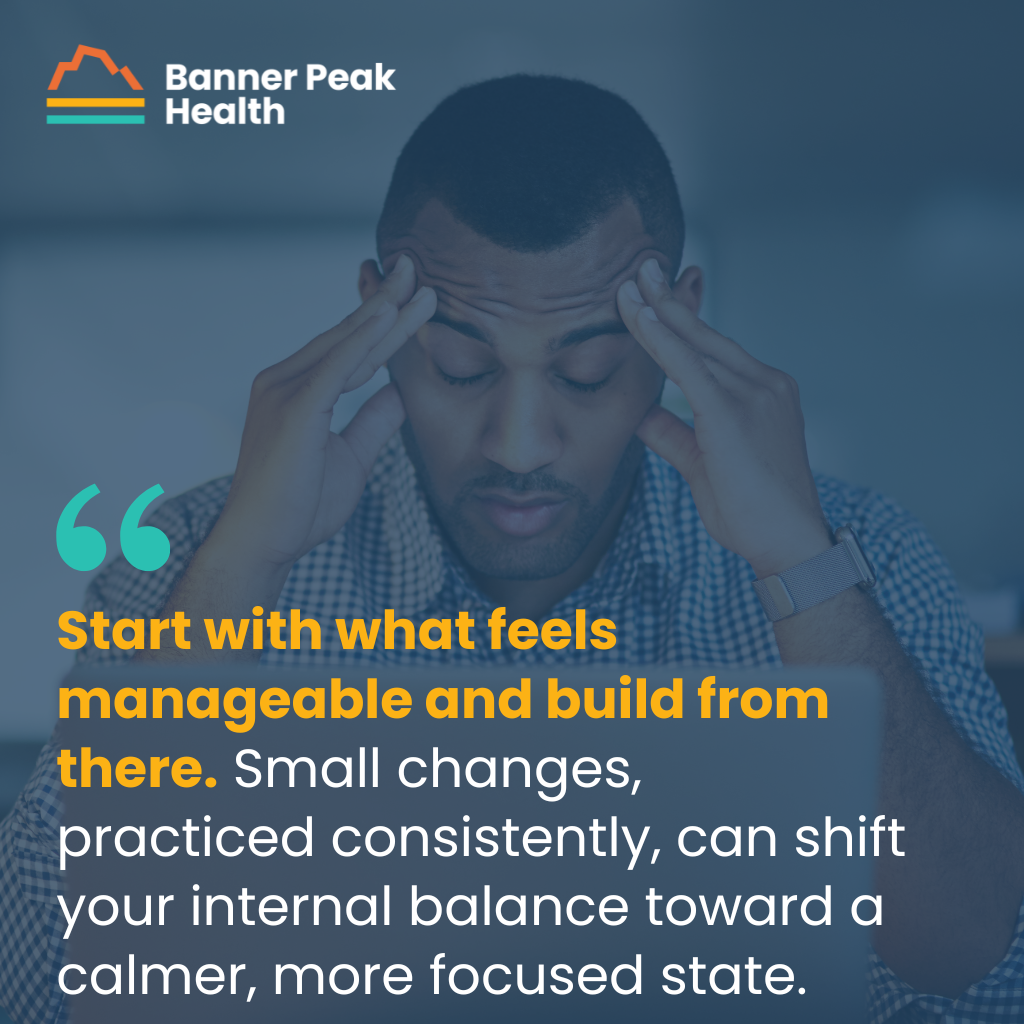
From Access to Optimization: The Evolution of Concierge Medicine
In July of 2007, I proudly became the second concierge medical doctor in Contra Costa County, California, pioneering a new way to bring high-quality care to patients. At the time, patients valued concierge medicine for its same-day care and after-hours phone calls.
My practice grew, and my patients were happy. For a while, running a successful practice was enough to satisfy me.
Over the past 18 years, I’ve watched the concierge medicine model evolve to become more widespread and accepted. At Banner Peak Health, I’ve helped drive that evolution toward what I call concierge medicine 2.0.
Concierge Medicine 1.0
Concierge medicine 1.0 is high-quality medical care that prioritizes patients and is not beholden to insurance companies. It preserves the golden era of medicine by prioritizing the patient-doctor relationship and upholding medicine’s core values:
- Patient rights
- Intellectual inquiry
- Patient-doctor bonding
- Differential diagnosis
Concierge medicine 2.0 moves beyond merely preserving the best traditions of medicine and develops new techniques to move healthcare forward.
Concierge Medicine 2.0
The concierge medicine model is appreciably different from fee-for-service healthcare. While 1.0 is high-quality internal medicine, 2.0 involves access to new technology and techniques unavailable in any other system.
At Banner Peak Health, we have access to diagnostic modalities not covered by insurance and labor-intensive treatment opportunities, which many traditional fee-for-service physicians can’t offer.
These treatments include:
- Galleri cancer screening, a simple blood test that can detect 50+ types of cancer.
- Coronary artery calcium score, a more accurate means of detecting heart disease risk than cholesterol alone.
- InBody scan, a complete body composition scan more accurate than BMI.
- SleepImage device, a comprehensive sleep study done at home with simple, precise technology.
- Labor-intensive testing techniques, which traditional healthcare lacks the bandwidth to offer. These include continuous glucose monitoring, the Oura Ring, and heart rate variability (HRV) measurement.
These advancements allow Banner Peak Health to provide personalized, direct, state-of-the-art care.
Looking Ahead
In recent years, we’ve seen an explosion in both FDA-approved and non-FDA-approved medical technology. My challenge and privilege is guiding my patients through the labyrinth of options.
The concierge medicine 1.0 model still struggles with bandwidth, though not as much as traditional healthcare. However, concierge medicine 2.0 facilities like Banner Peak Health are able and determined to better meet members’ needs.
As we move into the latter half of the 2020s, expect an increase in the prevalence of consumer wearables, like the Oura Ring. We expect manufacturers to develop and distribute these outside the medical industry, but we’ll break down silos and continue to identify and validate medical applications.
For example, sports medicine pioneered techniques for measuring and monitoring heart rate variability, but we now understand its relevance in internal medicine.
Today’s Takeaways
Concierge medicine 1.0 is superior to conventional (insurance-based) healthcare. However, at Banner Peak Health, we always want to push forward. We’re proud to offer concierge medicine 2.0, and we’ll continue to expand our practice.
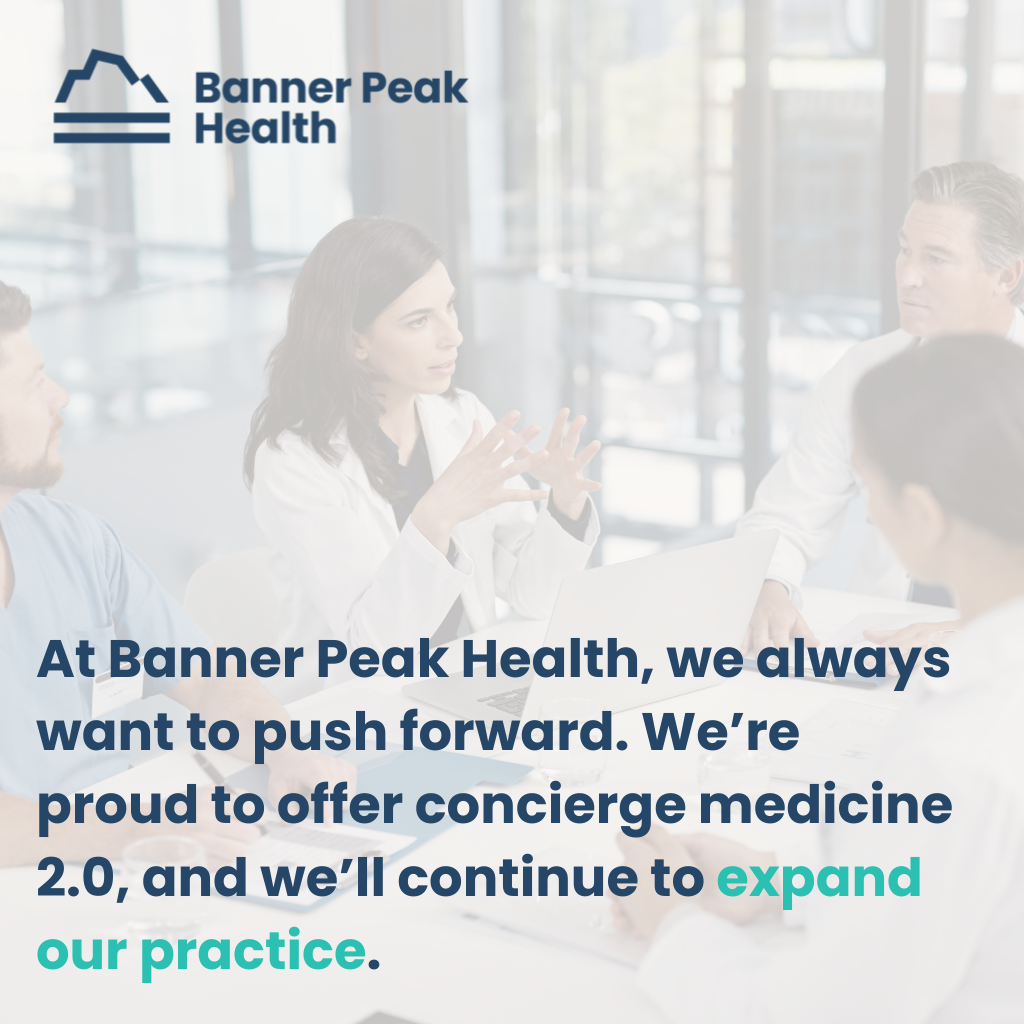
Unlock Your Potential: How to Naturally Boost Testosterone Levels
Every time I see a commercial for testosterone replacement, I cringe.
The United States is one of just two countries that permit direct-to-consumer pharmaceutical advertising (the other being New Zealand). As a physician with almost four decades of medical experience, I find it concerning that Congress believes 60 seconds of information delivered to a non-professional should influence my prescribing decisions.
It’s through this lens that I consider the surge in men seeking testosterone therapy.
The Challenge With Self-Diagnosis
Advertisements promoting testosterone therapy paint a broad picture: mood swings, depression, anxiety, low self-esteem, mental fog, fatigue, reduced sex drive, increased body fat, decreased muscle mass, sleep problems — what man hasn’t experienced some of these symptoms at some point?
From 2003 to 2013, testosterone prescriptions increased fourfold for men aged 18–45 and threefold for men aged 56–64. The rates keep climbing. “Men’s health clinics” — often just testosterone prescription centers — have multiplied across the country.
If someone’s only tool is a hammer, they’ll treat everything like a nail. Yes, some men have low testosterone and would benefit from replacement therapy. But many others could naturally boost testosterone levels by addressing underlying causes.
For instance, I recently saw a patient — a healthy man in his 40s — whose testosterone levels dropped after a weekend of heavy drinking and poor sleep. His first instinct was to ask me about testosterone replacement options rather than examining his habits.
The Leaky Roof Problem
Think about a leaky roof. Your body not producing enough testosterone is like that roof leak. You have two options: put on a raincoat or fix the leak.
In this case, testosterone supplementation is the raincoat, and addressing the root causes of low testosterone is fixing the leak. The raincoat might keep you dry, but wouldn't you rather repair the roof?
Why Your Testosterone Might Be Low
Low testosterone stems from two main types of hypogonadism — a medical term for when your body isn’t producing enough testosterone. Basically, something in your body isn’t optimal, and your evolutionary quality control is putting the brakes on reproduction.
In other words, Charles Darwin doesn’t think you should have kids right now.
Primary hypogonadism occurs when your testicles can’t produce enough testosterone on their own. Think of it like a factory that’s lost its manufacturing capability. This can happen due to:
- Inherited disorders
- Physical trauma to the testicles
- Hemochromatosis (iron storage disease)
- Cancer treatment side effects
Secondary hypogonadism is more common. Here, the problem lies with your brain’s signaling system — the hypothalamus and pituitary gland don’t send proper signals to tell your testicles to make testosterone.
This can result from:
- Abnormal hormone levels, like prolactin
- Iron storage disorders affecting the pituitary gland
- HIV/AIDS
- Thyroid disease
- Chronic pain medication use
- Type 2 diabetes
- Kidney disease
- Liver disease
- Lung disease
- Sleep apnea
- Steroid medications
- Alcohol overuse
- Severe stress
- Nutritional gaps
- Too much or too little exercise
Nature’s Warning Sign
Low testosterone acts like a canary in a coal mine — a warning that something needs attention. When your body reduces testosterone production, it’s indicating that conditions aren’t optimal for reproduction.
This signal deserves investigation, not just medication.
In fact, using testosterone or testosterone-like supplements can actually suppress your body’s natural production. Some men, particularly younger ones who misuse these substances, face permanent fertility problems even after stopping.
How to Naturally Boost Testosterone Levels
To naturally boost testosterone levels, start with self-reflection. Take an honest look at your:
- Sleep quality and quantity
- Get tested for sleep apnea if you snore
- Aim for 7–8 hours of quality rest
- Maintain a consistent sleep schedule
- Stress levels
- Build stress management habits
- Exercise habits
- Balance exercise without overdoing it — both overexercising and underexercising can lead to low testosterone
- Nutrition
- Alcohol consumption
- Medication use
- Talk with your doctor about alternatives to steroids or opioids
- Never stop medications without medical guidance
The Smart Path to Natural Testosterone Production
Some men need testosterone replacement, particularly those with age-related declines not linked to correctable conditions. However, many can naturally boost testosterone through lifestyle changes.
If you think you might have low testosterone, start by examining your habits and health. If you still feel testosterone therapy might help, work with a medical provider who will thoroughly evaluate all possible causes — one who looks beyond quick fixes to find the true source of the problem, like the physicians at Banner Peak Health.
Don’t just buy a raincoat. Fix the roof.
How Our New VO2 Master Measures VO2 Max
Testing new medical technology is one of my favorite parts of being Chief Innovation Officer at Banner Peak Health.
I’ve spent the last year researching VO2 max and Zone 2 testing devices for sports physiology. I’ve finally identified the best device for our members: the VO2 Master, made by a Canada-based company.
The VO2 Master is a portable device without external tubes or wires. Like a respirator, it fits over your nose and mouth, and integrated software connects with an app you download onto your phone or tablet. It’s sufficiently accurate in metabolic testing, and Peter Attia, author of The New York Times bestseller “Outlive,” considers it his go-to device.
When used with graded exercise testing, the VO2 Master provides a wealth of information we’ll use to understand our members’ metabolic health and athletic capacity. It also hones in on areas for improvement and helps create treatment plans.
The Importance of VO2 Max
VO2 max is how much oxygen you consume per kilogram of body weight. It’s a single measurement that encompasses the function of many important bodily systems, including:
- Lung capacity: Inhaling and exhaling
- Heart and blood vessels: How efficiently and in what quantities the blood delivers oxygen
- Muscle fibers: Muscle quality and quantity
- Mitochondria: Fuel sources, like fatty acids and glucose, mix with oxygen to produce ATP for energy
- Metabolic efficiency: Insulin resistance impairs mitochondrial function
- Note: Diabetics have lower VO2 max because they can’t burn fatty acid
- Non-muscle cell body mass: Every fat cell reduces VO2 max because fat doesn’t burn oxygen
VO2 max is one of the most potent longevity predictors, a point Peter Attia makes in his book as he encourages readers to maximize their VO2 max.
The Current Challenge
Derive your VO2 max by either:
- Measuring it at maximum output
- Estimating it from other derived physiological parameters
Although many people want to know their VO2 max, only a small percentage can successfully undergo a graded exercise test (measuring it at maximum output).
Unless you have athletic training, pushing your body to its limit is difficult — even more so while wearing a gas mask. Further, individuals with risk factors for cardiovascular disease who haven’t exercised to that level of intensity risk injury.
That’s why Banner Peak Health offers a modified submax test. It doesn’t require extreme exercise, but it still estimates VO2 max accurately. Safety is our priority.
We also offer a full VO2 max test for members with prior athletic training and no risk of cardiovascular disease.
How to Improve Your VO2 Max
To improve your VO2 max, focus on your:
Lung Function
Manage any obstructive illness, such as asthma or emphysema, and tell your physician if you have a history of scarring or pneumonia.
Use techniques like belly and diaphragmatic breathing to improve air movement through your lungs.
Heart and Blood Vessels
Maintain hydration and tell your physician if you have anemia symptoms. Then, stay cardiovascularly fit through two forms of targeted aerobic training:
- HIIT (High-Intensity Interval Training): Exercise involving exertion for one to five minutes at 90%–95% of your maximum heart rate, resting in between.
- Zone 2 Training: Exercise for 50–60 minutes thrice weekly at a conversational pace.
Muscle Fibers
Perform resistance training, or strength training, to increase your muscle fibers’ efficiency and quantity.
Mitochondria
Extra fat mass hormonally impairs your mitochondria’s ability to metabolize fatty acid.
Combine exercise and weight loss (reducing fat, not muscle) to reverse this and optimize mitochondrial function. Zone 2 training is particularly effective in this application.
Metabolic Efficiency
Weight loss (i.e., fat reduction) improves VO2 max since excess fat cells don’t burn oxygen. Reducing fat also improves metabolic efficiency by reducing your total kilograms of body tissue.
Looking Forward to Improvement
It’s possible to improve your VO2 max by 5%–10% in just 60–90 days. Some people have improved their VO2 max by 25% over a year.
The lower your VO2 max is now, the more room you have to improve it, and the faster that improvement may be.
VO2 Master will help you understand your health status. With that information, your Banner Peak Health team will guide you to your health and performance goals.
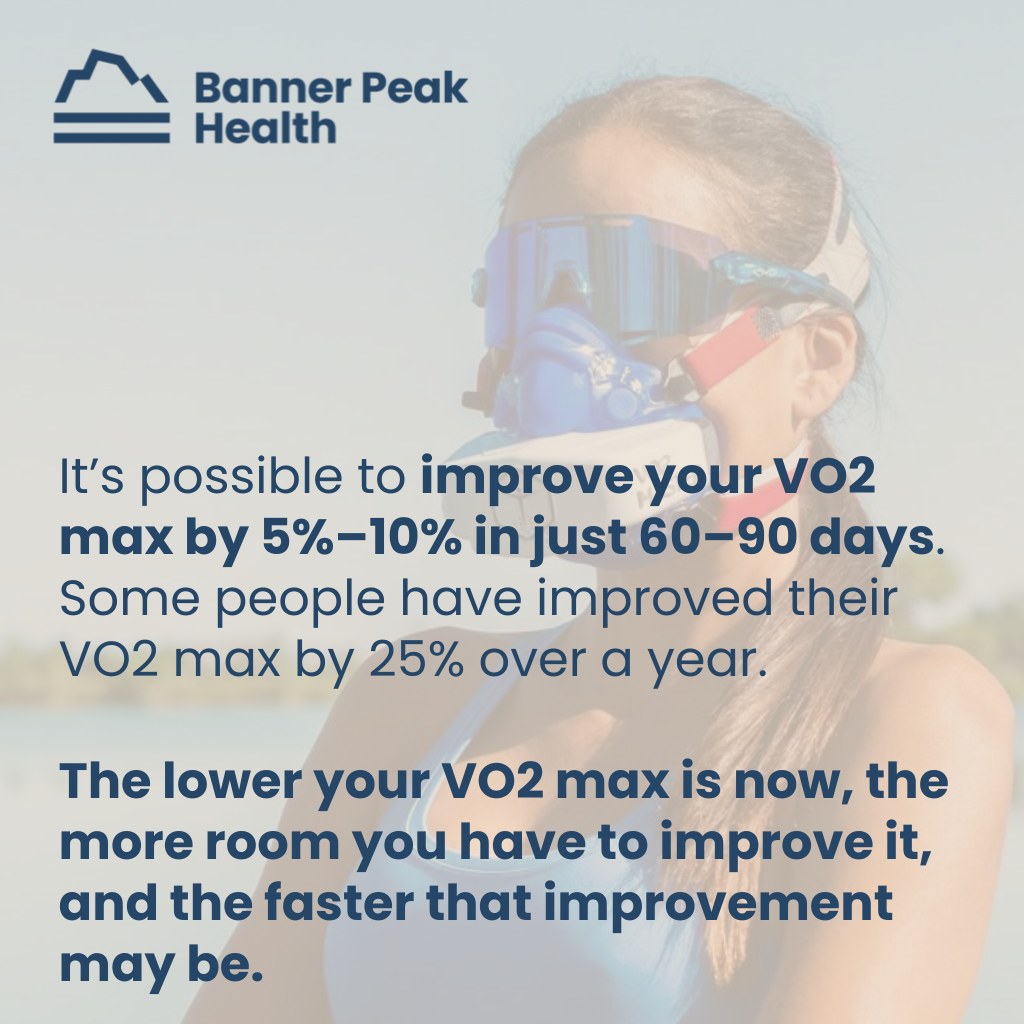
CPAP Alternatives: Effective Ways to Treat Obstructive Sleep Apnea
We lose muscle tone while we sleep, increasing the risk of our tongue falling backward and the collapse of our throat muscles.
When this happens, the result is obstructive sleep apnea (OSA) — partial or complete blockage of the upper airway, interfering with air passage to and from your lungs during sleep. This interference reduces the amount of oxygen reaching the body and brain and releases adrenaline, hindering the body’s ability to sleep.
Normal sleep physiology occurs in stages, which I’ve written about extensively. OSA disrupts these stages because of hindered breathing, causing many serious problems.
In the short term, OSA can cause poor memory, headaches, and fatigue, which may cause the patient to fall asleep while driving. Long-term complications include:
- Increased risk of obstructive airway disease
- Heart attacks and congestive heart failure
- Non-alcoholic fatty liver disease
- Non-insulin-dependent diabetes
- High blood pressure
- Insulin resistance
- Atrial fibrillation
- Dementia
Obstructive Sleep Apnea’s Impact on Hormones
Obstructive sleep apnea increases the release of stress hormones such as adrenaline and epinephrine.
Beneficial hormones OSA reduces:
- Human growth hormone (HGH): Repairs and builds muscles.
- Testosterone: Maintains sexual function and healthy body composition in terms of muscle mass and fat distribution.
- Estrogen: Maintains healthy body composition and bone health.
Potentially harmful hormones OSA increases:
- Cortisol: Impairs immune function and increases the risk of obesity.
- Leptin: Decreases satiety.
- Ghrelin: Increases appetite.
Athletic Issues
Not only does OSA impair day-to-day functioning and increase the risk of long-term illnesses, but it also interferes with athletic performance in terms of strength, endurance, and cognition.
In 2013, the Journal of Clinical Sleep Medicine examined 12 male, middle-aged golfers with severe OSA. The golfers underwent treatment with continuous positive airway pressure (CPAP — more on this later). Then, after 20 rounds of golf, every golfer’s handicap index (HI) was evaluated.
While the non-OSA control group showed no improvement, the OSA group treated with CPAP improved by 11.3%, and the more skilled players (HI<12) improved by 31.5%.
I’m not a golfer, but I’ve worked with many and have recognized their devotion to the sport. This study proved they’ll do anything to improve their game.
Hurdles to Treatment
CPAP treatments are effective and beneficial. However, patients often hesitate to discuss their OSA symptoms with a physician because they’re afraid they’ll be prescribed a CPAP machine.
CPAP (continuous positive airway pressure) is the gold standard of obstructive sleep apnea treatment. Unfortunately, for most people, it evokes Darth Vader, with a face obscured behind a large mask.
Thankfully, CPAP machines have come a long way since their inception in the 1980s. They’re no longer vacuum cleaner-esque appliances. Even the full-face models are whisper-quiet. If you can’t stand the thought of re-enacting the “Luke, I am your father” scene with your spouse every night, there are plenty of variations to choose from.
For severe OSA or mild-to-moderate OSA with risk factors for complications such as heart attack, AFib, or stroke, the first choice and standard of care is a CPAP machine. But if you suffer from mild-to-moderate OSA and a CPAP machine is off the table for you, you may benefit from an array of alternative treatments.
The Evolution of OSA Treatment
The old-school diagnosis of obstructive sleep apnea required an overnight polysomnogram (at a sleep study facility) with 22 wires attached to you. If you received a diagnosis of OSA, a CPAP machine prescription followed. It wasn’t practical to repeat the sleep study to assess how well the CPAP machine worked for you.
At-home sleep studies and sleep-tracking tools (such as SleepImage) have since improved OSA treatment. These advancements allow for effortless multi-night testing in the comfort of your home, allowing a trial-and-error approach to OSA treatment. This is revolutionary, not only diagnostically but therapeutically.
Stacking Therapy Modalities
Stacking modalities means combining multiple therapies. Each individual therapy may offer only a minimal benefit, but combined together, they can provide significant improvement. Each person can experiment with combining a variety of treatments to create a successful outcome, rather than reaching for the biggest gun (i.e., CPAP) first.
At Banner Peak Health, we use SleepImage and collaborate with Empower Sleep. We also consider adding other modalities to the stack, including tools that:
- Improve nasal patency: Nasal steroids, nasal strips, and nasal dilators improve airflow through the nostrils.
- Minimize mouth breathing: Tools like external straps and tape close the mouth and encourage nasal breathing. These tools also hold the tongue in a more forward position and prevent it from falling backward as we sleep, where it might obstruct the airway.
- Improve sleep position: Pillows and wedges prevent people from sleeping on their backs. A supine (lying flat on the back) position puts a person at risk of obstruction, and gravity compounds this risk. Side sleeping helps stabilize the throat muscles so they don’t collapse and interfere with air passage in and out of our lungs.
- Improve tone and tongue position: Excite OSA and REMplenish Straw are like push-ups for your tongue. Mandibular advancement devices like myTAP and Zyppah bring the lower jaw forward. Since the lower jaw anchors the tongue, this repositioning reduces the obstruction risk by keeping your tongue clear of the airway.
- Modify airway pressure (without CPAP): Try Bongo Rx for increased expiratory positive airway pressure.
Today’s Takeaways
Sleep is the foundation of good health. That’s why Banner Peak Health stays at the cutting edge of sleep science. We’re always brainstorming new ways to maximize and optimize your sleep.
Reach out today and tell us about your sleep concerns. We’re happy to help you.

Anabolism vs. Catabolism: How to Balance Both for Healthy Weight Loss
This year, my Thanksgiving dinner table conversation included weight loss efforts. My friends and family members reported their eating and aerobic exercise habits. No one mentioned resistance training.
Resistance strength training is essential for successful weight loss. To understand why, we must first understand anabolism and catabolism.
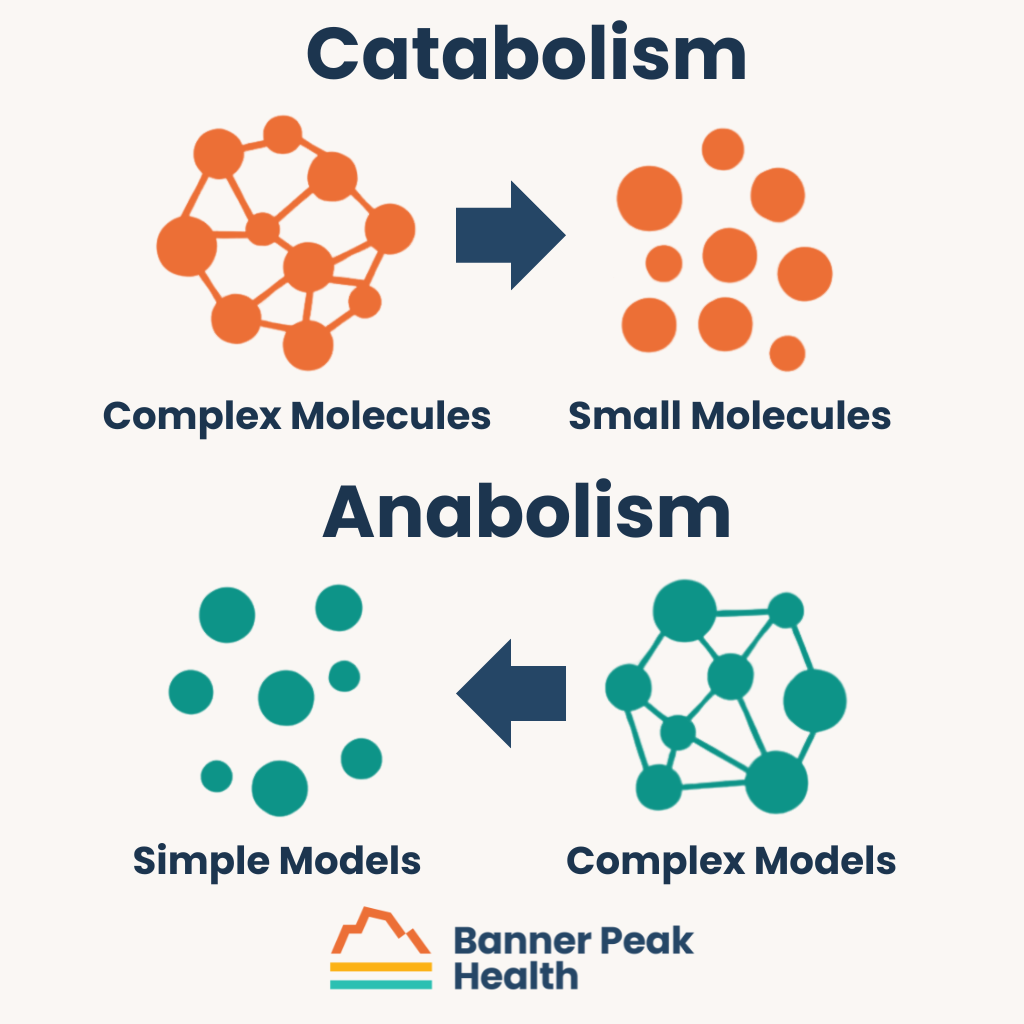
Anabolism vs. Catabolism
Catabolism is the process of breaking complex molecules into smaller ones to release energy as ATP, a chemical fuel for the body. ATP allows cellular functions, growth, and movement.
Anabolism builds complex models from simple ones through a process that requires ATP.
Anabolism and catabolism exist in a balance called homeostasis, which reflects the body’s metabolic condition.
Weight Loss Isn’t Just Superficial
Weight loss’s effects go beyond physical appearance. It improves almost every aspect of your health, including your health span (the number of years you enjoy optimum health).
To do that, we need to increase muscle mass and reduce fat tissue. How we lose weight determines what happens to those two components.
In traditional caloric restriction dieting, we consume fewer calories than our bodies metabolize, i.e., the body eats itself. When this happens, about 25% of weight loss comes from muscle and 75% from fat. For example, if you lose 10 pounds, 2.5 pounds will be muscle, and 7.5 pounds will be fat.
Fat cells are endocrinologically active. They skew our bodies metabolically in negative ways, and we want to get rid of them.
Muscle cells skew our bodies positively. Losing muscle puts some people at risk for sarcopenia — a lack of adequate muscle mass.
Muscle Mass and Metabolism
The body metabolizes (i.e., burns up as energy) 70–90% of its glucose in the muscle cells. The more muscle cells we have, the more adequate our glucose balance and quantity, and the healthier we are.
Muscle mass is how we:
- Preserve function, including our ability to move and perform tasks, and our ability to stay strong and balanced to reduce fall risk
- Preserve our quality of life
- Preserve and extend our life expectancy
As we age, we produce less hormones involved in muscle maintenance, such as human growth hormone and testosterone. People also tend to do less weight-bearing exercise as they age, so the muscles receive less stimulus to maintain their mass. And as we age, anabolic resistance (where it becomes harder for the muscles to build up from anabolic processes) makes it harder to maintain muscle mass.
Think of muscle mass as money in the bank. We invest our money early to ensure a comfortable retirement decades later. In the same way, lay down muscle mass when you’re young and energetic so it’s there to maintain later.
Balancing Anabolism and Catabolism
This brings us back to anabolism and catabolism.
You lose muscle mass if your body skews toward catabolism. Be exceptionally careful during that catabolic process to maintain muscle mass. Otherwise, you risk sarcopenia.
The Dangers of Weight-Loss Drugs
You’ve probably heard of a new, powerful class of weight-loss drugs, including Wegovy, Mounjaro, and Ozempic.
These GLP-1 receptor agonists (such as semaglutide and liraglutide) induce such strong catabolic states that they’re associated with 10–40% of weight loss as muscle mass. This happens because:
- Your body is strongly catabolic, breaking down lots of tissue.
- You’re making behavioral modifications. People often use these drugs in conjunction with dieting, markedly reducing caloric intake. However, calories provide the fuel your body needs to function. A person’s body can’t keep up with normal activity during rapid and extreme diet and weight loss, and muscles atrophy because of this reduced activity. With less energy for anabolic processes to maintain muscle, the balance shifts further to catabolism.
- Your appetite is suppressed. Patients taking GLP-1s crave carbohydrates and fat instead of protein, leading to muscle loss.
How to Optimize Anabolism and Catabolism to Lose Weight Safely
Prioritize losing the right weight: fat, not muscle mass. At Banner Peak Health, we don’t think about weight in isolation. Instead, we consider the relationship between anabolism and catabolism, and we use several techniques to facilitate fat loss and preserve muscle.
If you’re on a GLP-1 receptor agonist, you’ll complete an InBody composition scan every time you visit the office. We’ll measure your muscle mass vs. fat mass to ensure you lose less of the former and more of the latter.
We also help our patients increase their protein intake as a percentage of reduced total calories.
Healthy weight loss requires work — aerobic exercise, strength training, and protein consumption — and our physicians are here to help. Reach out today and tell us about your weight loss goals.

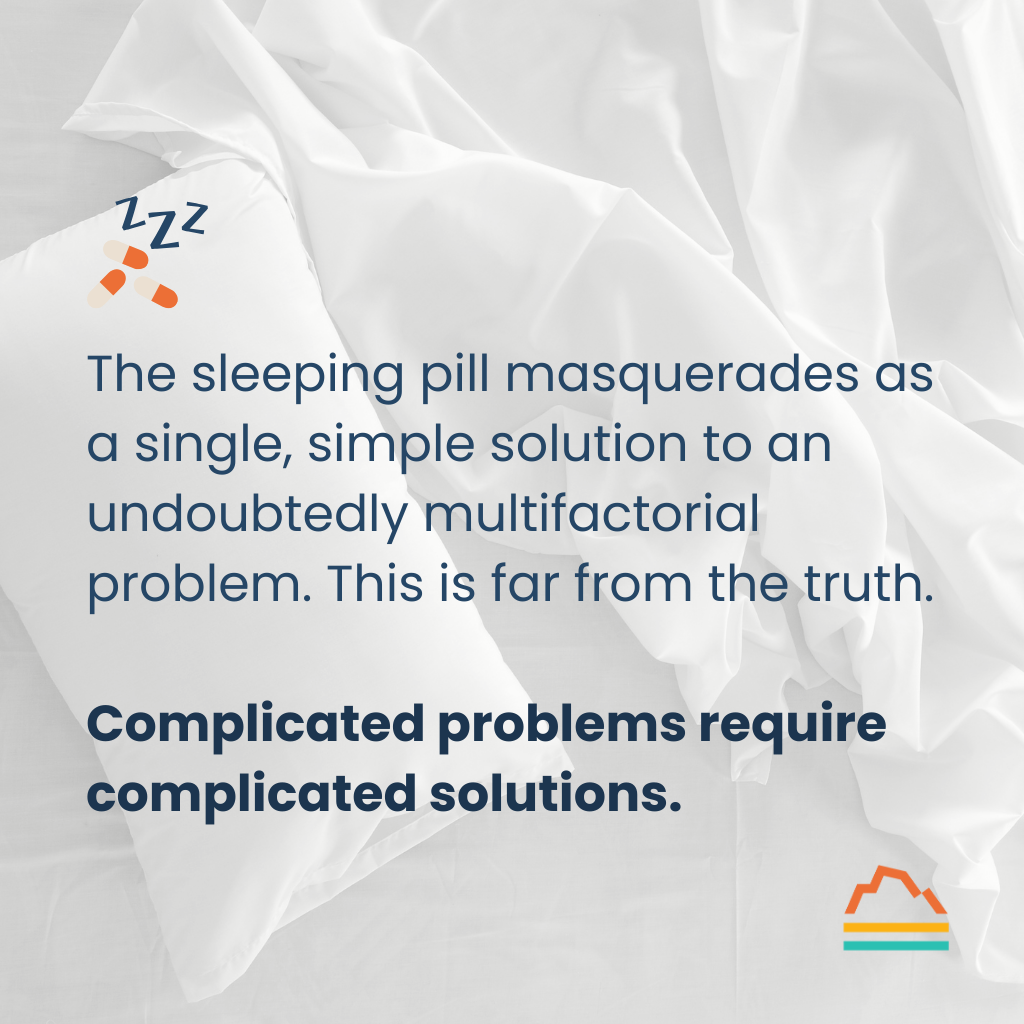
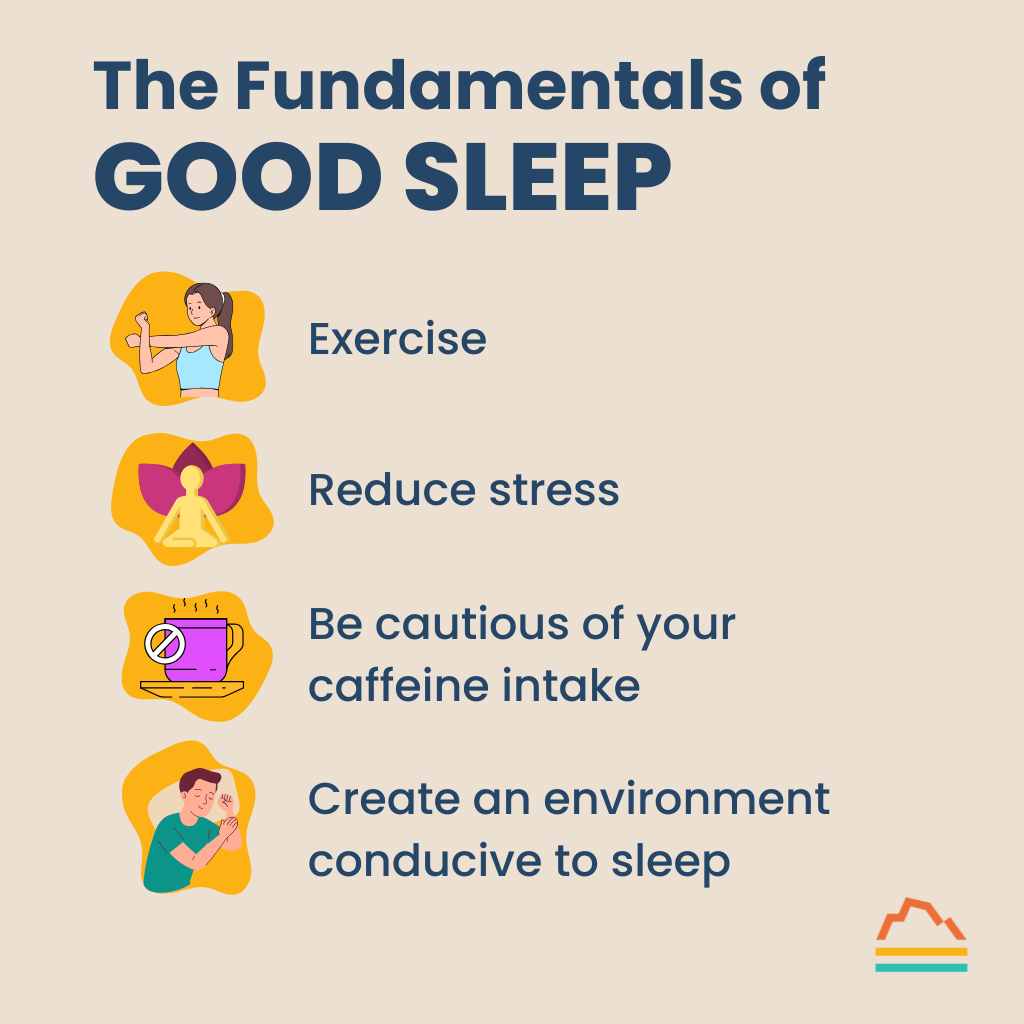
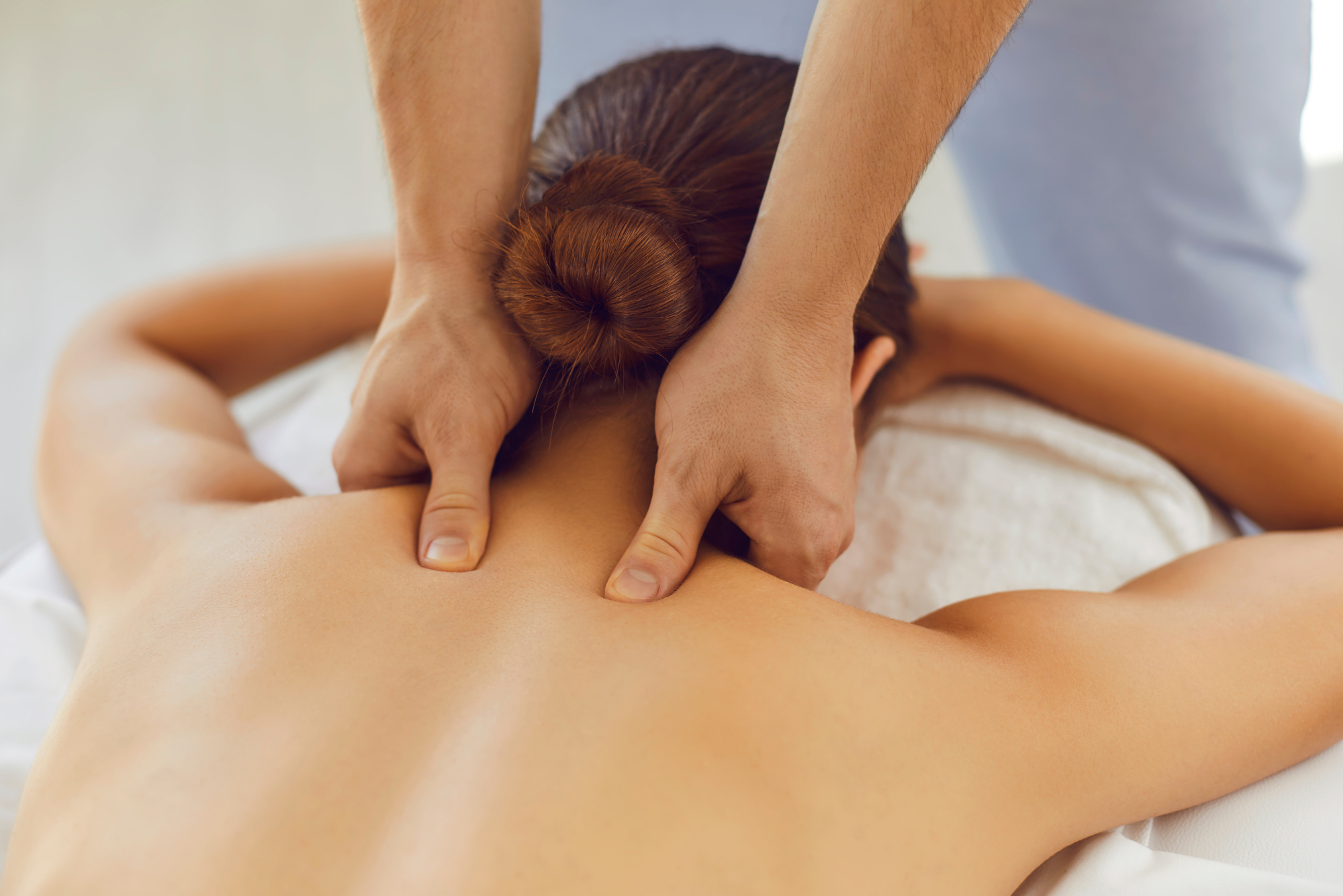
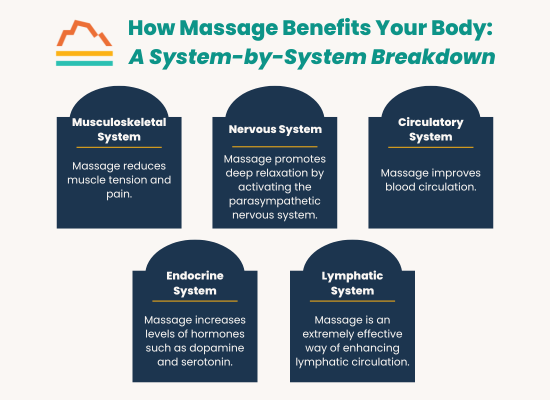
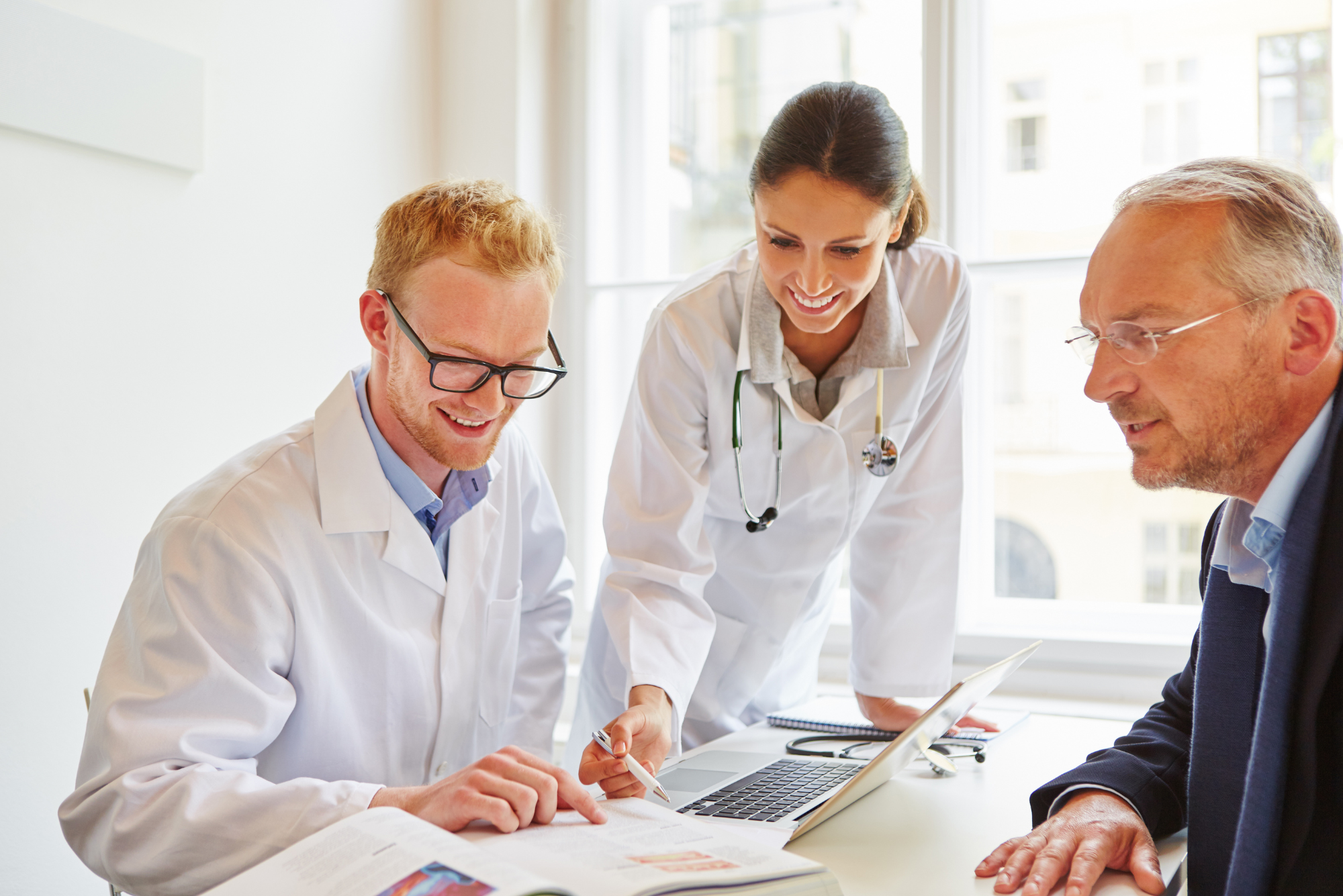

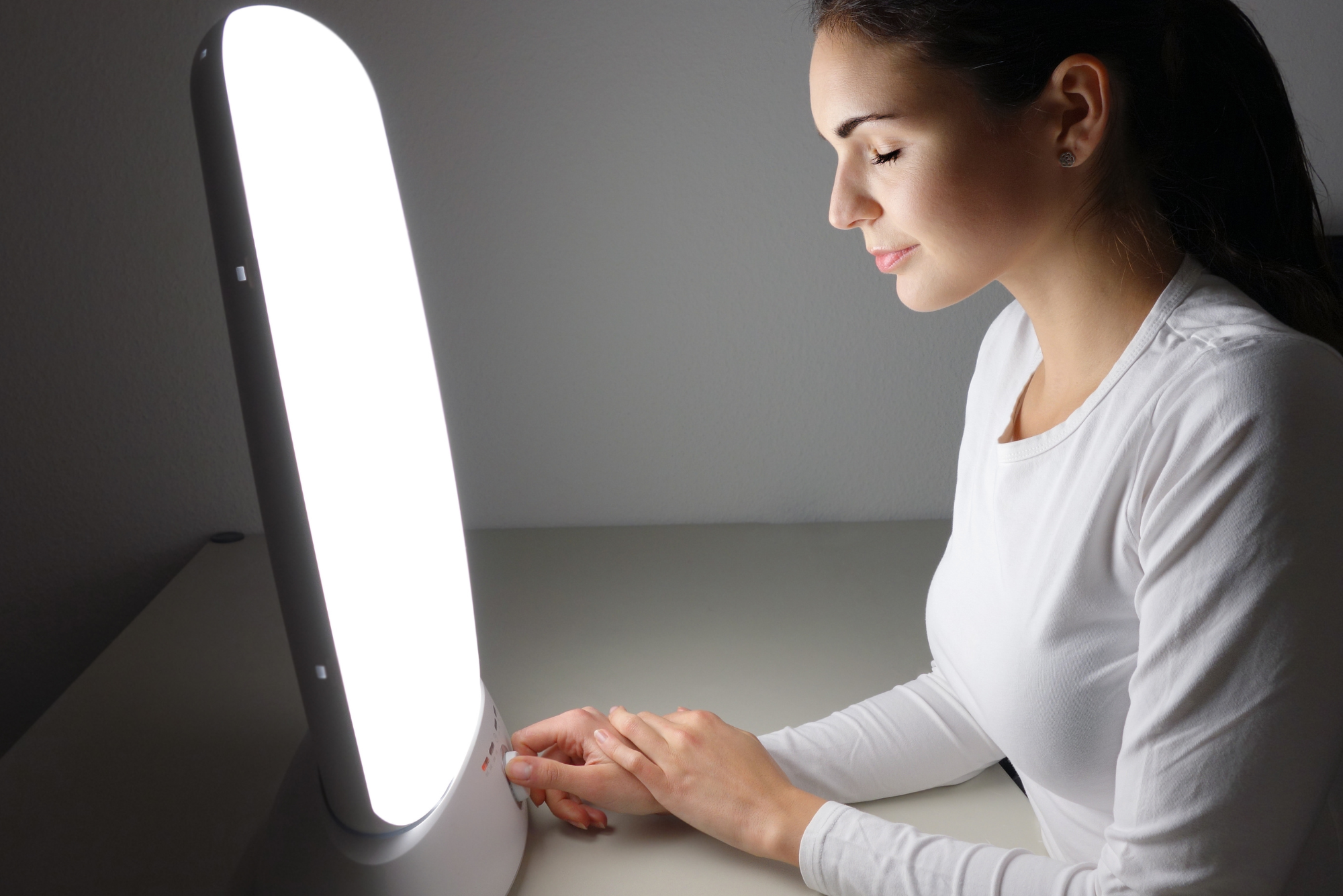
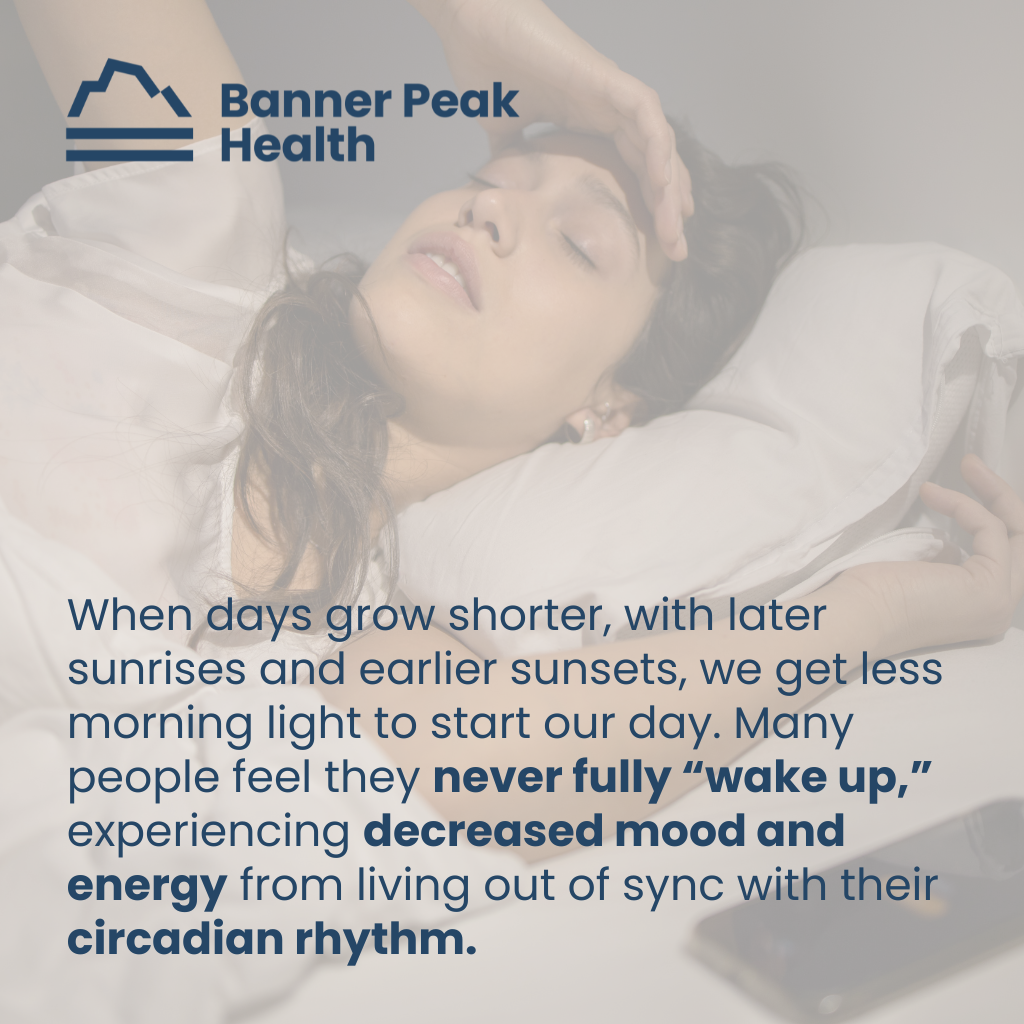
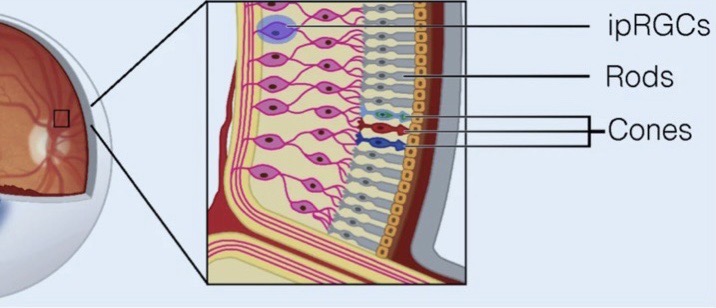 Source:
Source: 
